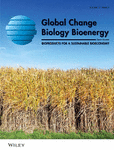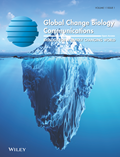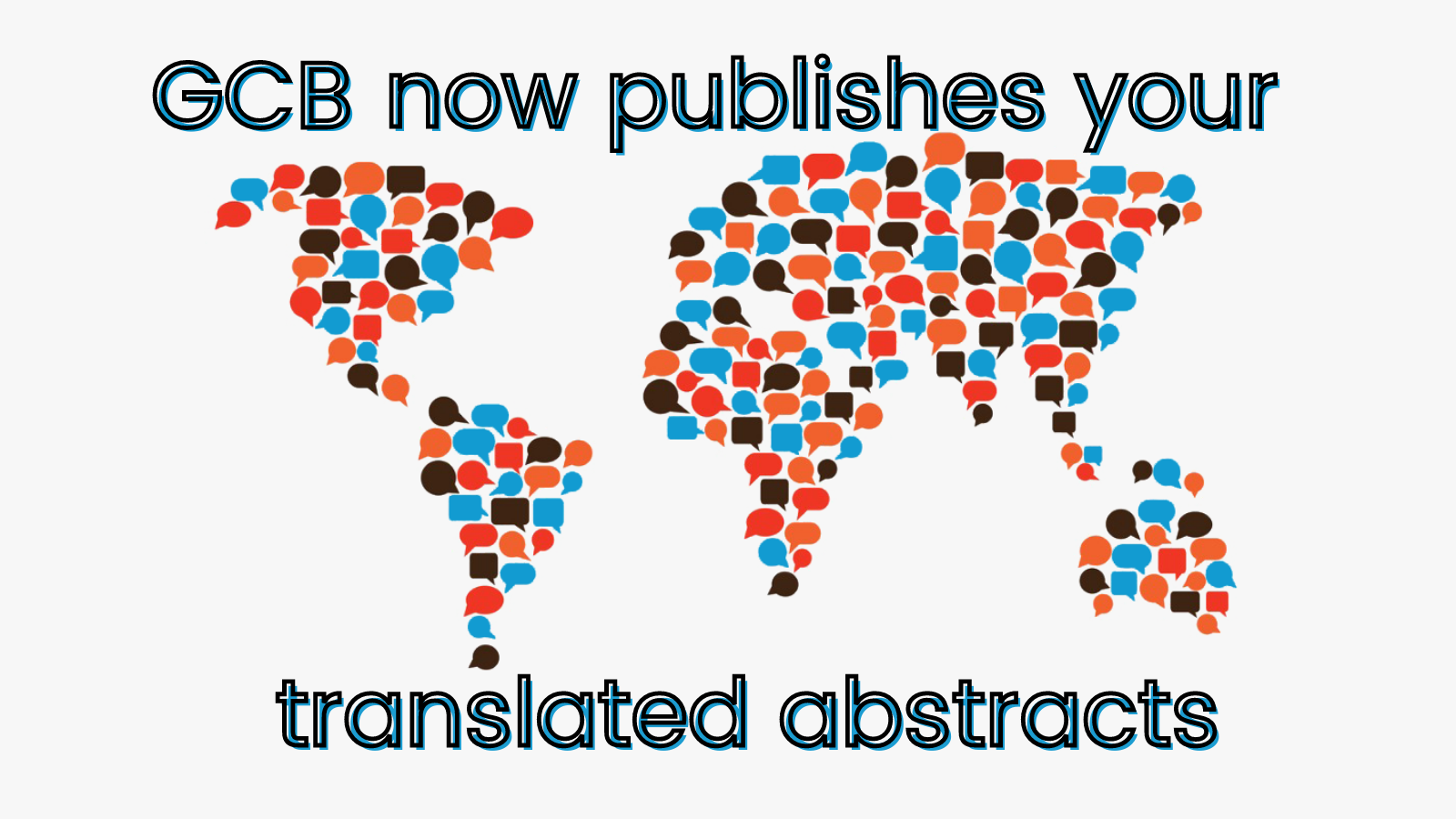Journal list menu
Export Citations
Download PDFs
ISSUE INFORMATION
REVIEWS
The biological controls of soil carbon accumulation following wildfire and harvest in boreal forests: A review
- First Published: 29 April 2024
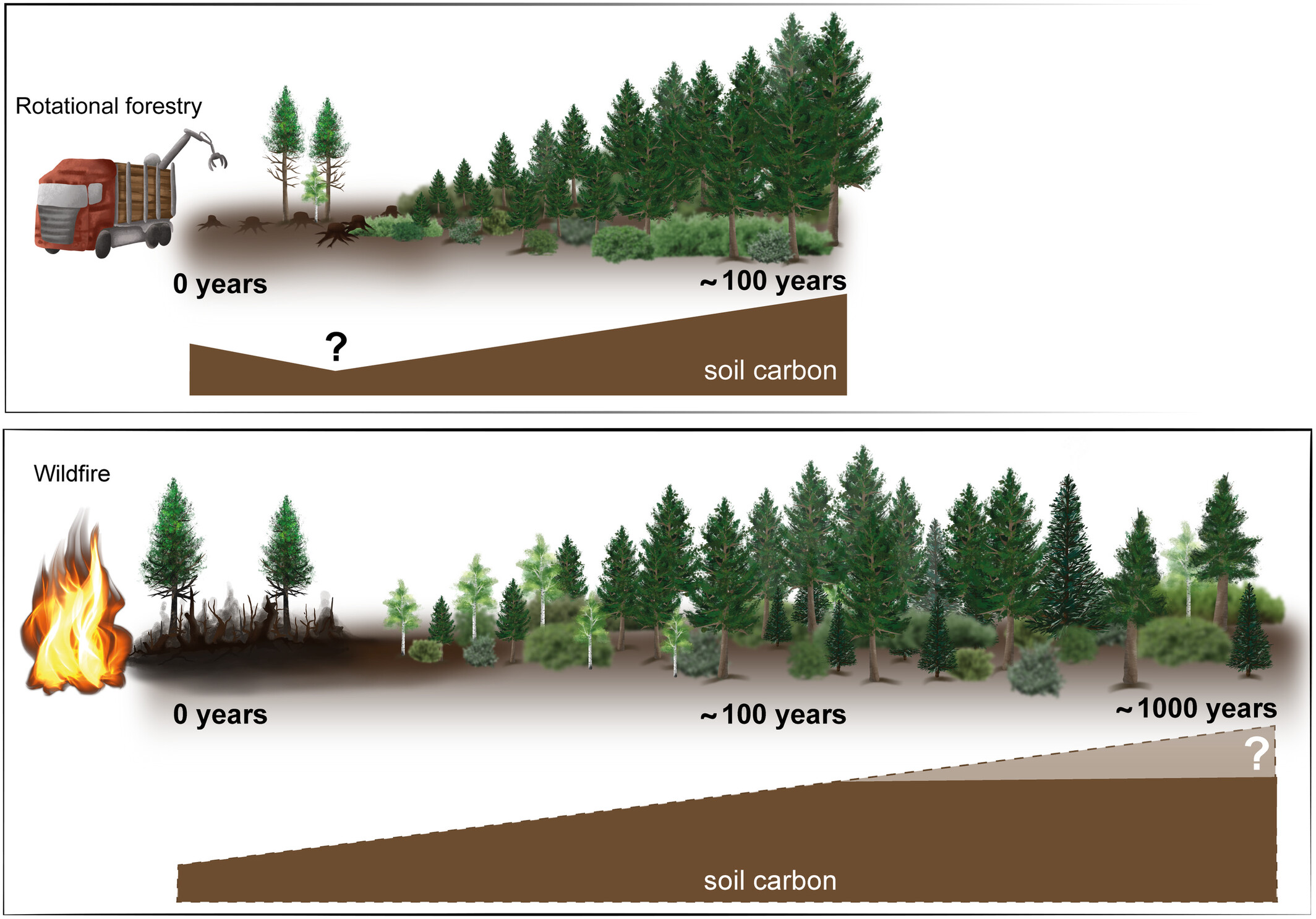
Boreal forests have vast quantities of carbon in their soils. These forests are frequently subjected to wildfire or harvesting activities, which can cause soil carbon losses. We review the wide range of biological mechanisms that can control soil carbon stock recoveries following these disturbance. While some of these influences are well known, for example plant production and quality of litter inputs, our review identified many frontiers that remain relatively unexplored, such as root production, traits of root associated fungi, or respiration from soil decomposers.
OPINION
Buffering and phenological mismatch: A change of perspective
- First Published: 13 May 2024
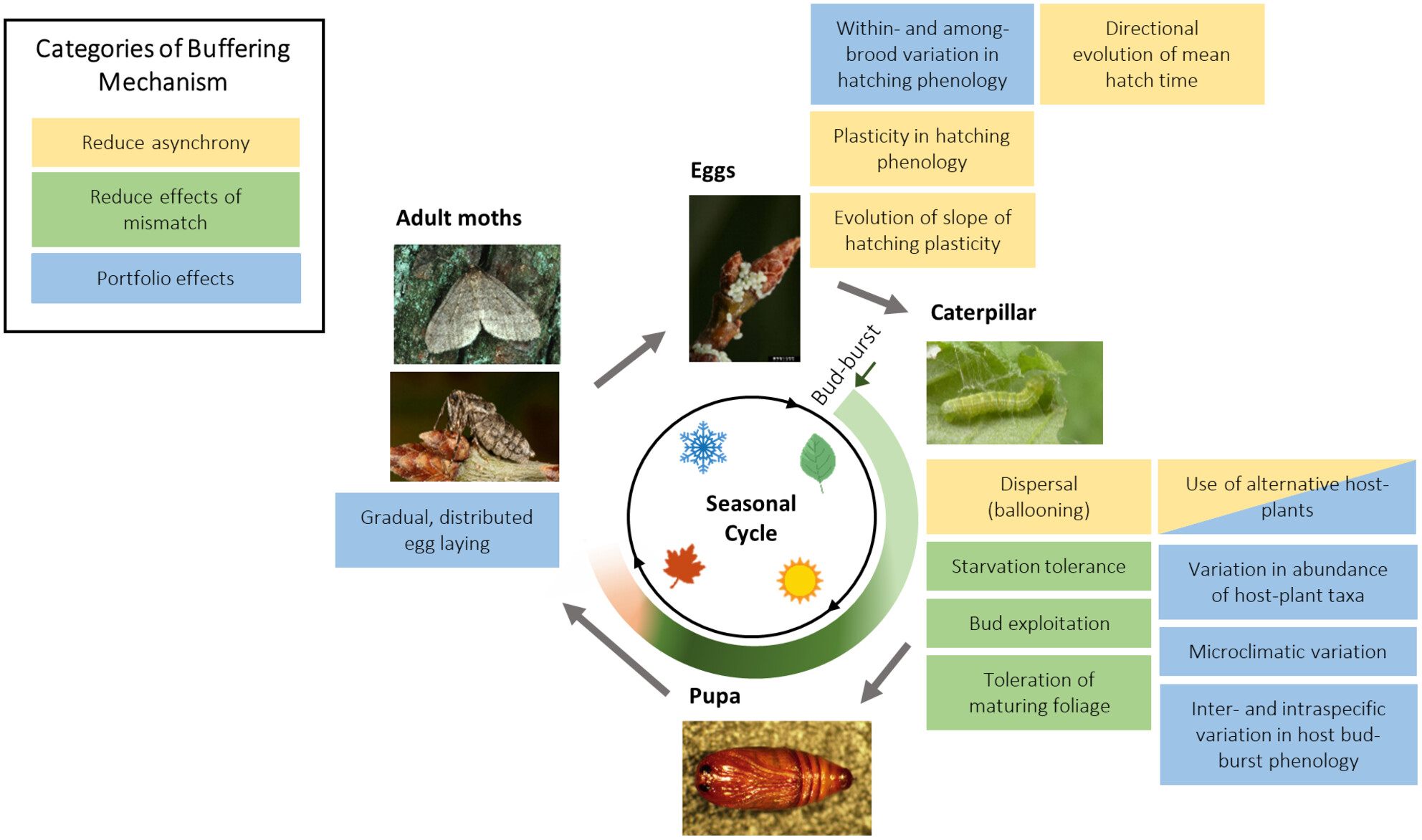
Climate change can shift the seasonal timing of many species, and potentially disrupt feeding interactions between species that were formally synchronized in time. We identify a variety of mechanisms that could act to buffer consumer species against temporal disruption with their resources, highlighting the ubiquity of these mechanisms and their implications for the resilience of ecosystems under climate change. We stress the need for further work to identify the significance of ‘buffering’ in nature and hence which species may be most at risk from this threat.
RESEARCH ARTICLES
Multiple stressors alter greenhouse gas concentrations in streams through local and distal processes
- First Published: 30 April 2024
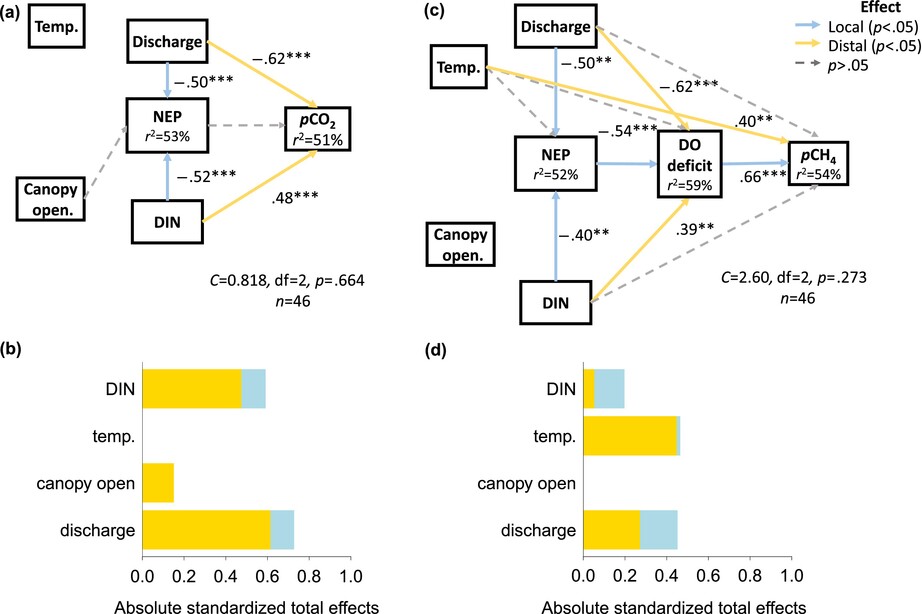
We found that the simultaneous occurrence of several human-induced stressors in streams increases the concentrations of greenhouse gases in their waters, potentially exacerbating climate crisis. Our results also indicate that the scale at which human impacts occur has different effects on carbon dioxide and methane concentrations. Collectively, our findings suggest that reducing nitrogen inputs and addressing hypoxia in streams could provide additional co-benefits, aiding in the fight against climate change.
Arctic plasmidome analysis reveals distinct relationships among associated antimicrobial resistance genes and virulence genes along anthropogenic gradients
- First Published: 30 April 2024

We investigated the impact of melting glaciers and wastewater in the Arctic on the aquatic resistome. Plasmids, small genetic carriers known for transferring antibiotic resistance genes among bacteria were our target. By studying these genetic elements in glacial ice and nearby waters of Svalbard, we uncovered the presence of the unique as well unexpected for this region stress-response genes, including antibiotic resistance and virulence genes, shedding light on bacterial adaptation and resistome dynamics in extreme Arctic environments.
Inferred drought-induced plant allocation shifts and their impact on drought legacy at a tropical forest site
- First Published: 02 May 2024
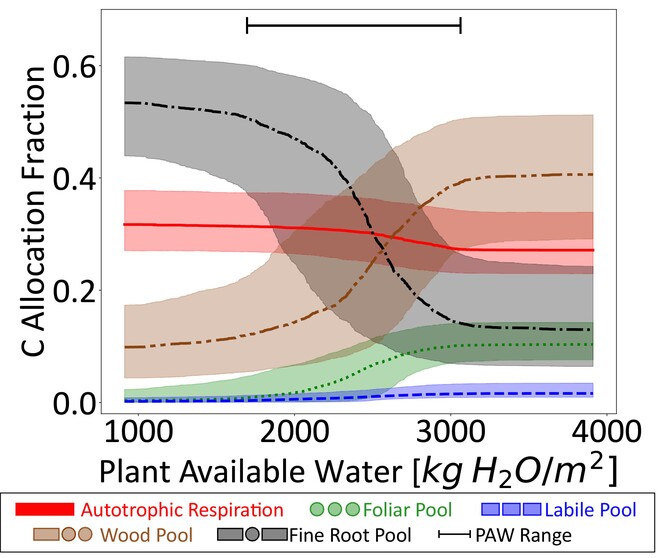
At a wet location in the tropics, we demonstrate that changes in how plants allocate carbon (for growth or respiration) can be determined using model data fusion (constraining model runs with observations through a Bayesian statistical method), rather than relying on difficult direct measurements. The models show that changes in plant growth at this site significantly reduced the plant's ability to absorb carbon after a drought. This reduction was due to decreased leaf allocation that lowers photosynthesis and increased root allocation that enhances carbon release into the atmosphere through more litter production and decomposition.
Meta-analysis reveals that the effects of precipitation change on soil and litter fauna in forests depend on body size
- First Published: 07 May 2024
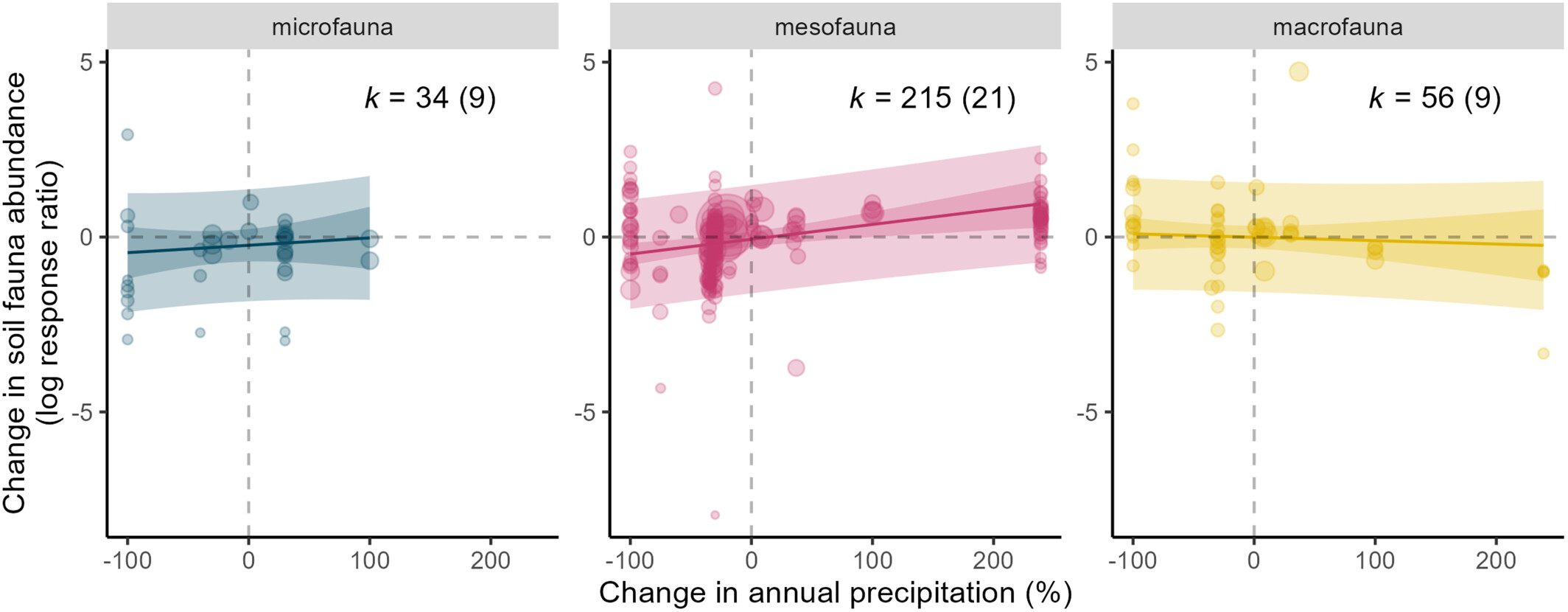
Our meta-analysis found that decreases in rainfall reduce the abundance and diversity of soil and litter invertebrates in forests and that increases had the opposite effect. Importantly, the effect of changes in rainfall were more pronounced for mesofauna than microfauna and macrofauna. The relationship we found between body size and response to precipitation will aid predictions of future responses of soil biodiversity to climate change as well as these impacts on soil functioning.
OPINION
It's time to broaden what we consider a ‘blue carbon ecosystem’
- First Published: 07 May 2024
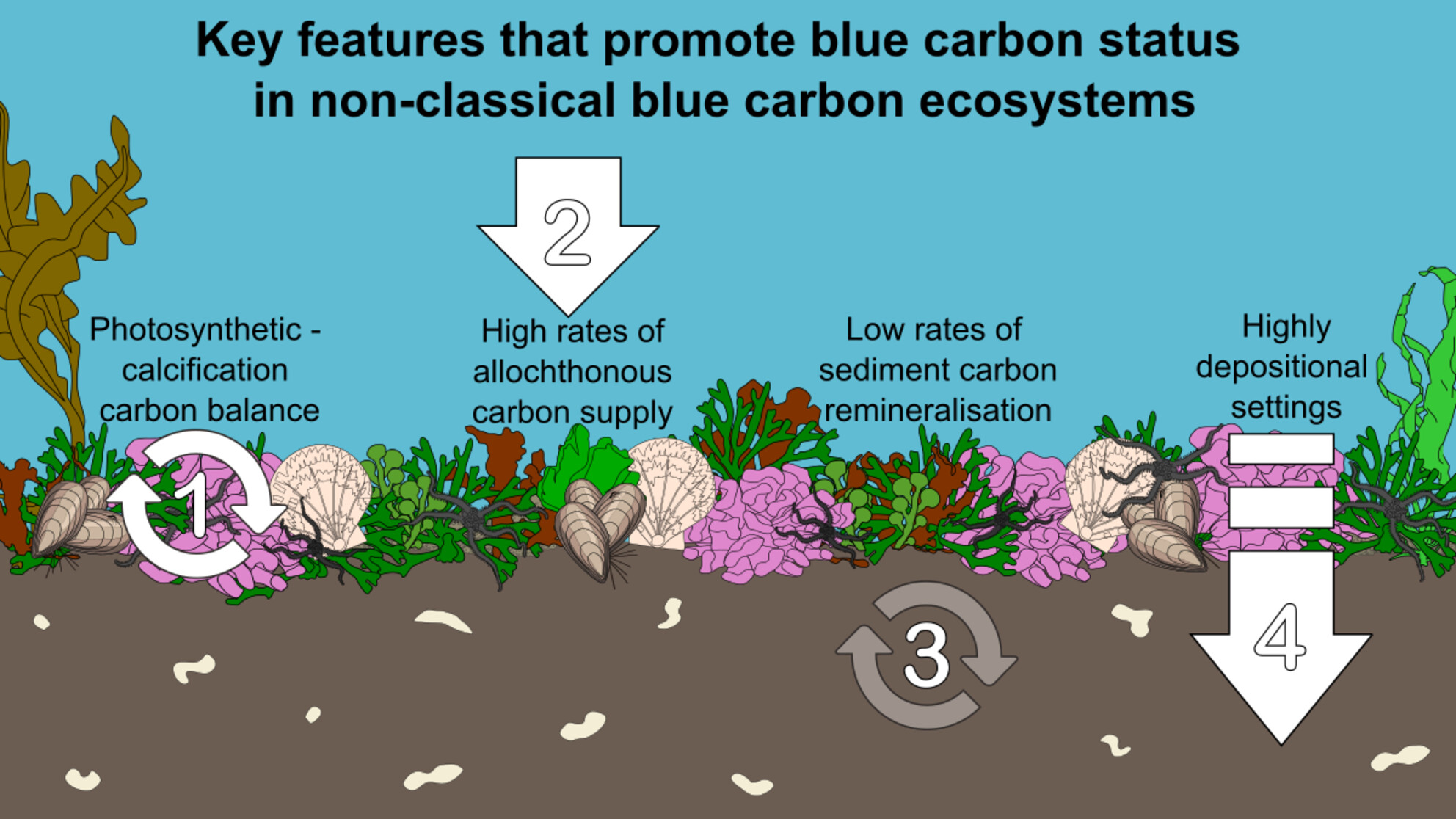
Marine ecosystems are important in mitigating rising atmospheric CO2 because of their capacity to store significant quantities of carbon (called blue carbon). To date, three key blue carbon ecosystems have been recognized (seagrass meadows, mangrove forests, tidal marshes), however, evidence is emerging that other ecosystems may also be important. Here, we use meta-analysis of 253 research publications to investigating the role of other marine ecosystems in blue carbon. At present, mud/tidal flats, shallow sediments/fjords, some components of coral reef systems (e.g. lagoons), and coralline algal beds should also be considered important for blue carbon burial.
RESEARCH ARTICLES
Global synthesis on the response of soil microbial necromass carbon to climate-smart agriculture
- First Published: 03 May 2024
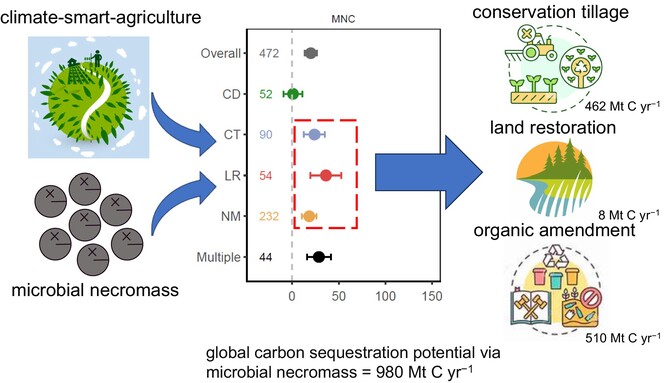
By implementing climate-smart agricultural practices, we can amplify the storage of carbon within microbial residues, offering promising avenues in the fight against climate change. These enhancements are intricately tied to an array of factors including soil properties, climatic conditions, and biological dynamics, with alterations in living microbial biomass as a primary contributor. In sum, implementing these approaches can potentially store 980 million metric tons of carbon into the soil via microbial necromass.
Tree contributions to climate change adaptation through reduced cattle heat stress and benefits to milk and beef production
- First Published: 03 May 2024

We developed a generally applicable and multi-scale model for the impact of trees in mitigating cattle heat stress. Trees can reduce cattle heat stress by up to 30% and hold the greatest potential to reduce cattle heat stress in higher latitudes and altitudes. In 2070–2080, existing trees were model to contribute substantially to New Zealand milk yields and meat yields, with a total economic contribution of trees in mitigating future cattle heat stress valued at over $US 244 million.
Crop rotational diversity can mitigate climate-induced grain yield losses
- First Published: 07 May 2024
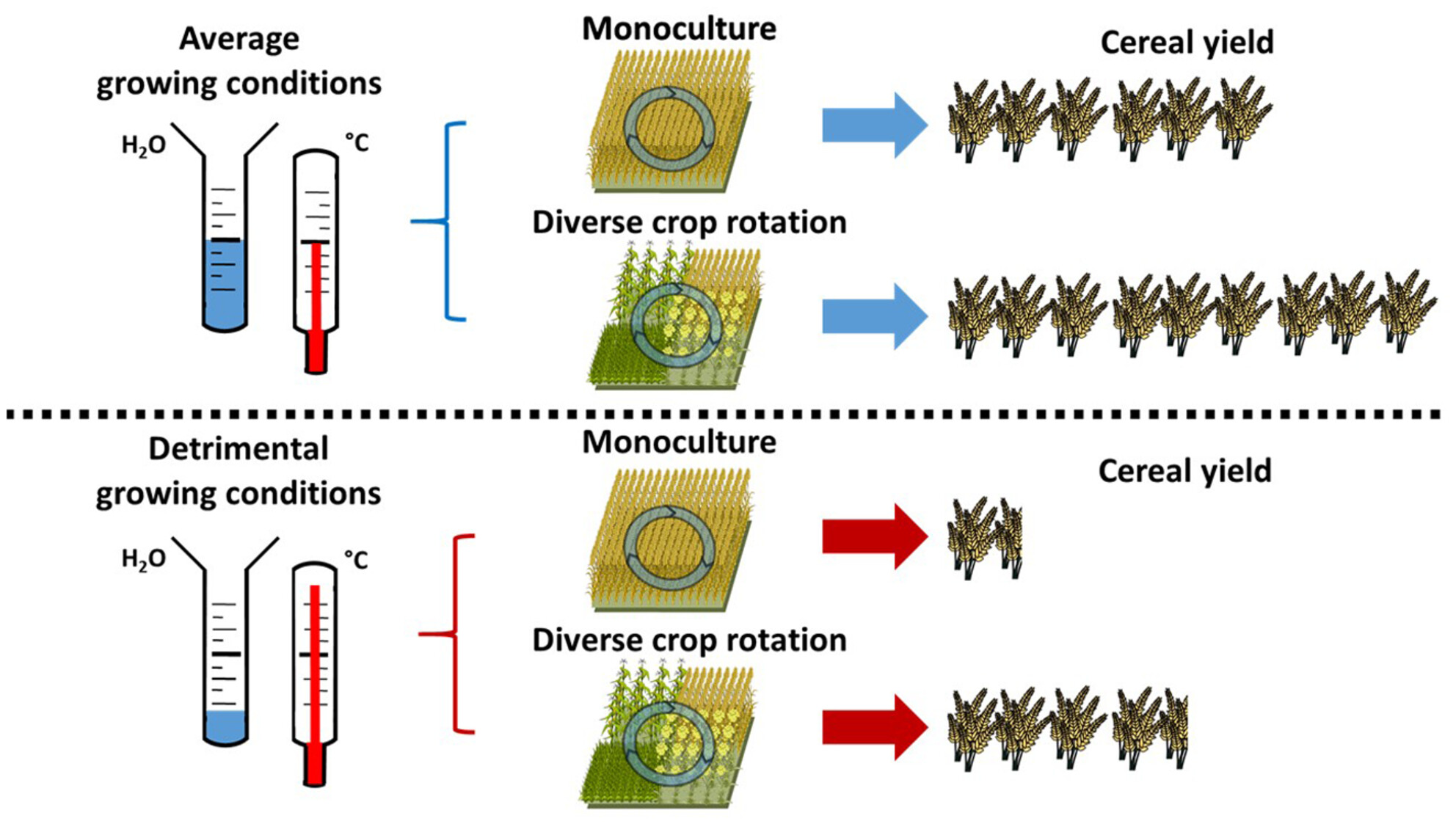
Industrial agriculture often relies on one or few crop species grown in monocultures or short crop rotations, making them vulnerable to changes in climatic conditions. Using data from several agricultural experiments in Europe and North America, we show that including more crop species or crop types in rotation can mitigate cereal yield losses caused by increasingly common shifts in climatic conditions, such as increasing temperatures and decreasing precipitation. Hence, increasing crop rotational diversity can support the climate adaptation of the way we produce our food.
Dispersal and connectivity in increasingly extreme climatic conditions
- First Published: 03 May 2024
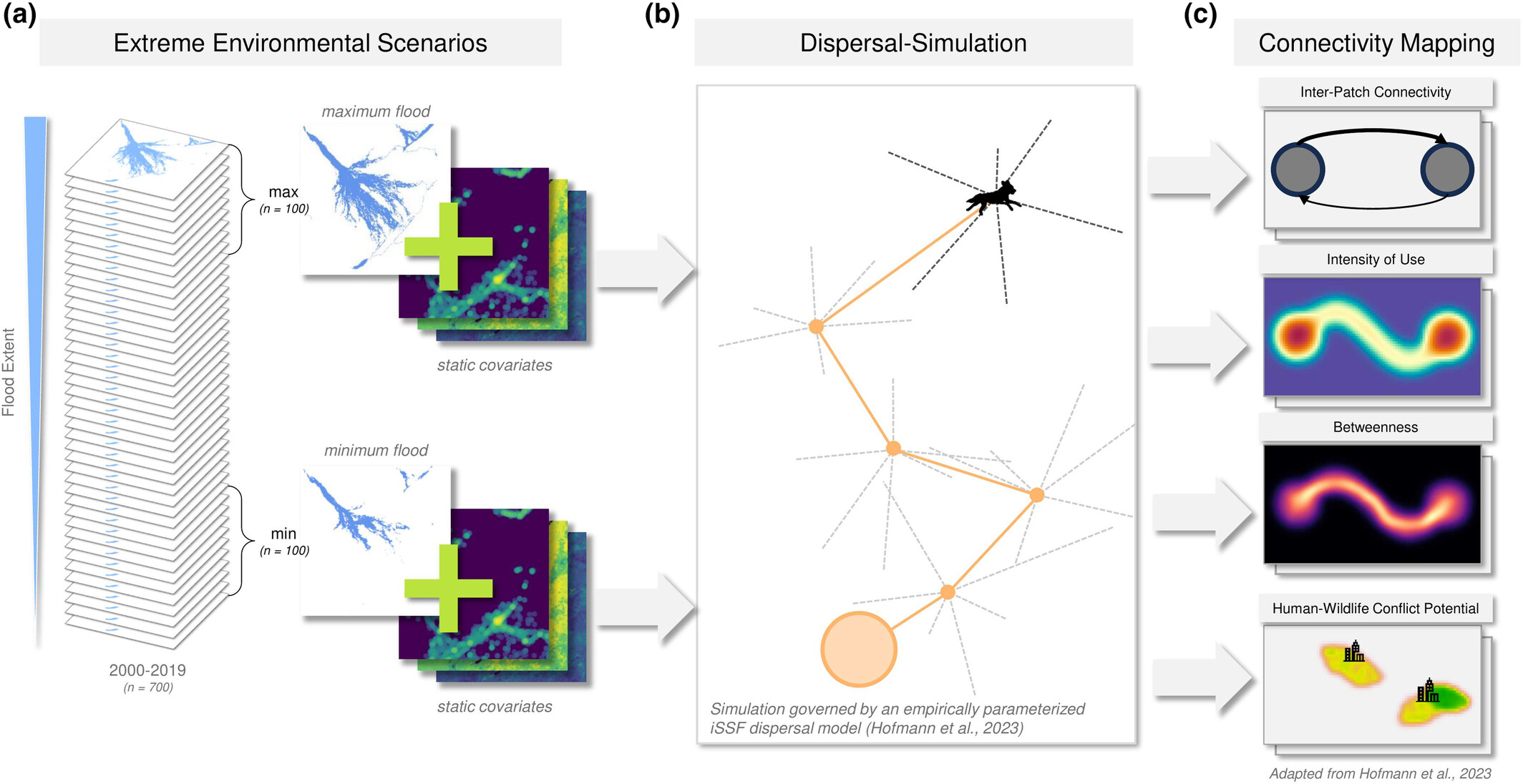
This study examines how altered environmental conditions due to climate change, particularly an altered flooding regime of the Okavango Delta, could affect the dispersal and connectivity of the endangered African wild dog. Using flood scenarios representing pronounced dry and wet periods, we find that more extreme floods can alter dispersal patterns and may rearrange dispersal corridors, shifting potential hotspots for human–wildlife conflict. Understanding these impacts is crucial for the conservation of large carnivores in light of continued climate change.
Assessing the effectiveness of marine nature-based solutions with climate risk assessments
- First Published: 07 May 2024
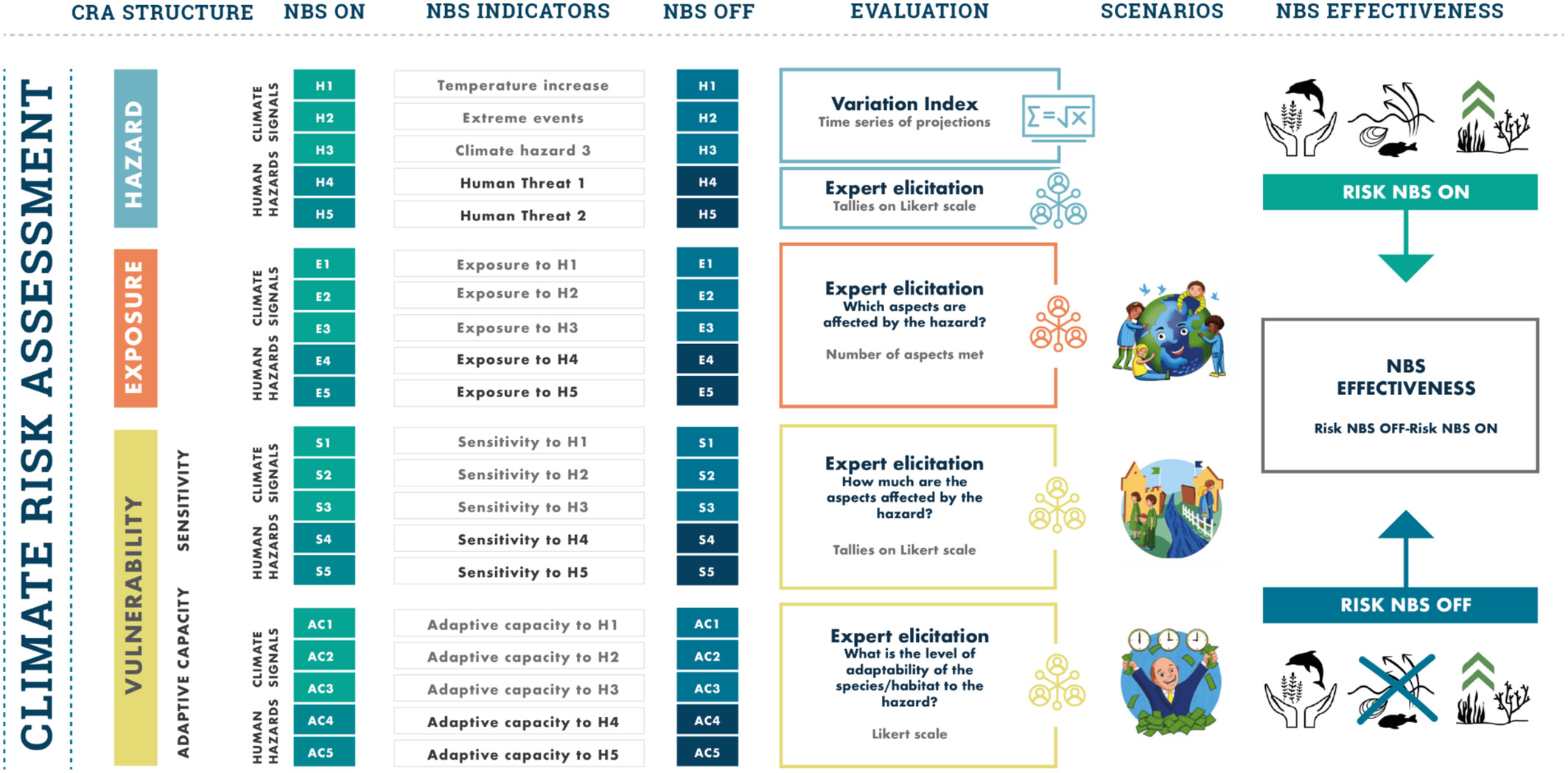
Despite the increasing demand for nature-based solutions (NBS) to mitigate climate change impacts, we still lack a comparable way to estimate their effectiveness. Here we present a methodology for the estimation of the effectiveness of marine NBS based on the difference of risk estimated when they are applied and when they are not. The effectiveness is estimated from the perspective of each unit of analysis considered (species, or ecosystem services, for example), and it is also dependent on the socioecological context, which allows us to understand the benefits and potential losses of the effectiveness of these management measures.
Land use change and coastal water darkening drive synchronous dynamics in phytoplankton and fish phenology on centennial timescales
- First Published: 09 May 2024
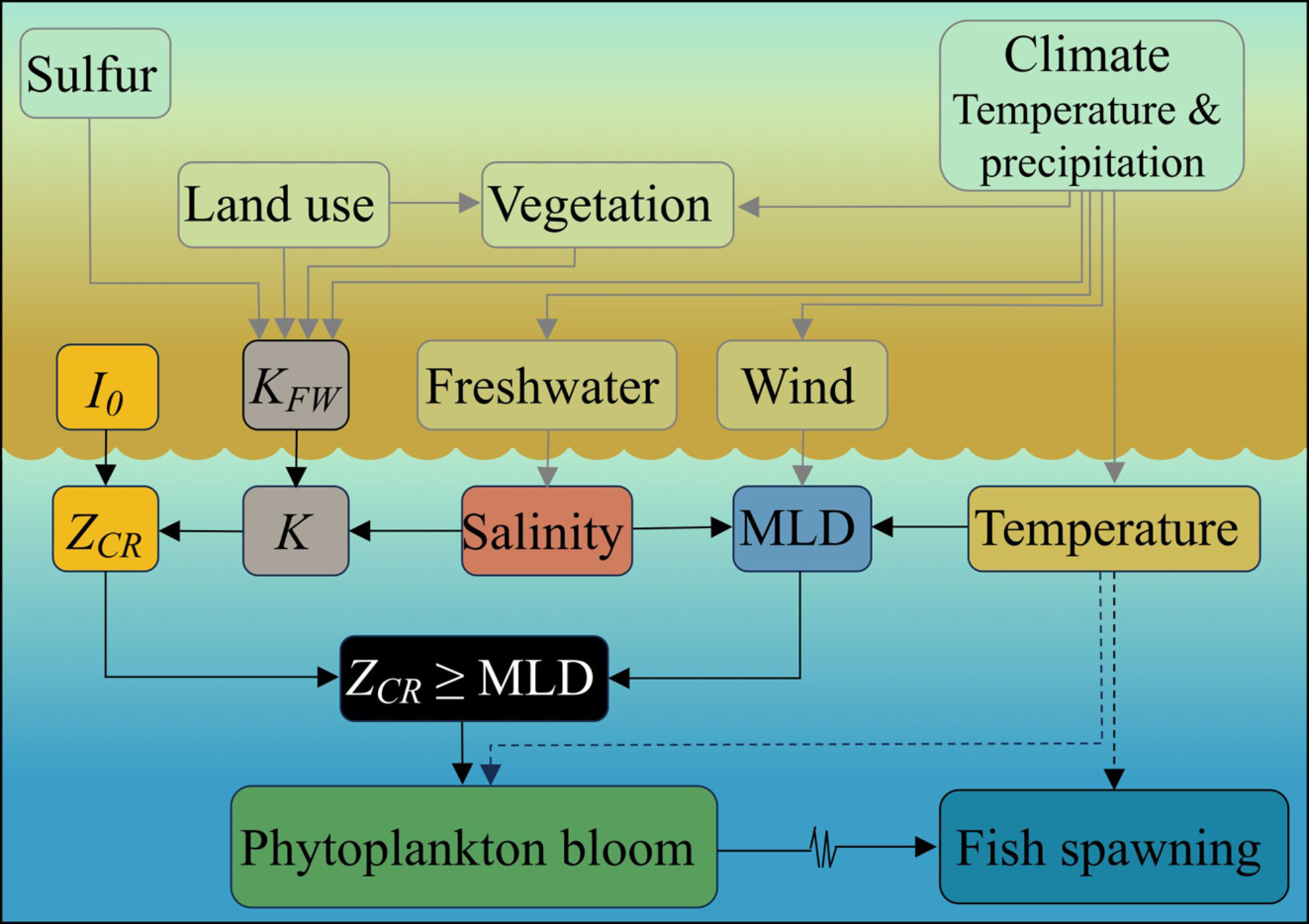
In temperate and Arctic areas, land-use change together with a warmer and wetter climate promote plant and forest growth making freshwaters browner as more degraded plant-litter end up as coloured dissolved organic matter. Although freshwater drain to the coast, the downstream consequences in coastal marine ecosystems are poorly understood. Here, we propose that a century of afforestation in Northern Europe has caused more than a month delay in spawning time for the Northeast Atlantic cod. The two are connected through a cascade of physical and biological processes, starting with plant growth on land moving through browner lakes and rivers causing decreased light penetration in coastal waters that postpone the phytoplankton spring bloom and culminate in an adaptive adjustment of spawning time for the cod.
Widespread breakdown in masting in European beech due to rising summer temperatures
- First Published: 06 May 2024
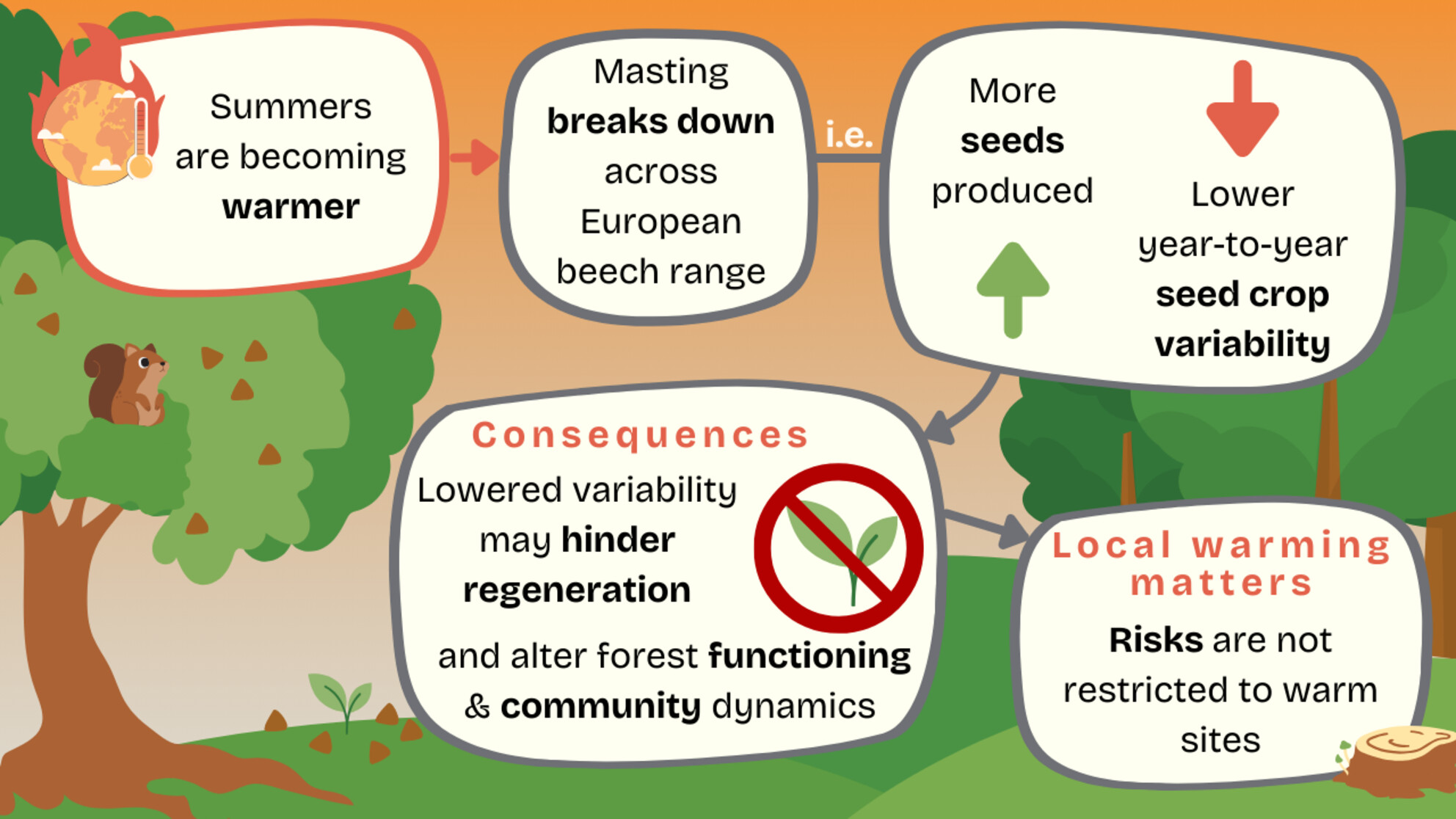
As summer temperatures rise, annual seed crop size is becoming less variable over time in European beech, and the decline in variability is greatest where temperatures are increasing fastest. Additionally, years with no or few seeds became less common during the last four decades, signalling that seed predators may no longer be suppressed by cycles of starvation and satiation. The decline in variability may hinder beech regeneration under climate change despite an overall increase in seed production, and has broader implications for the functioning of forest ecosystems.
Rapid climate change increases diversity and homogenizes composition of coastal fish at high latitudes
- First Published: 10 May 2024
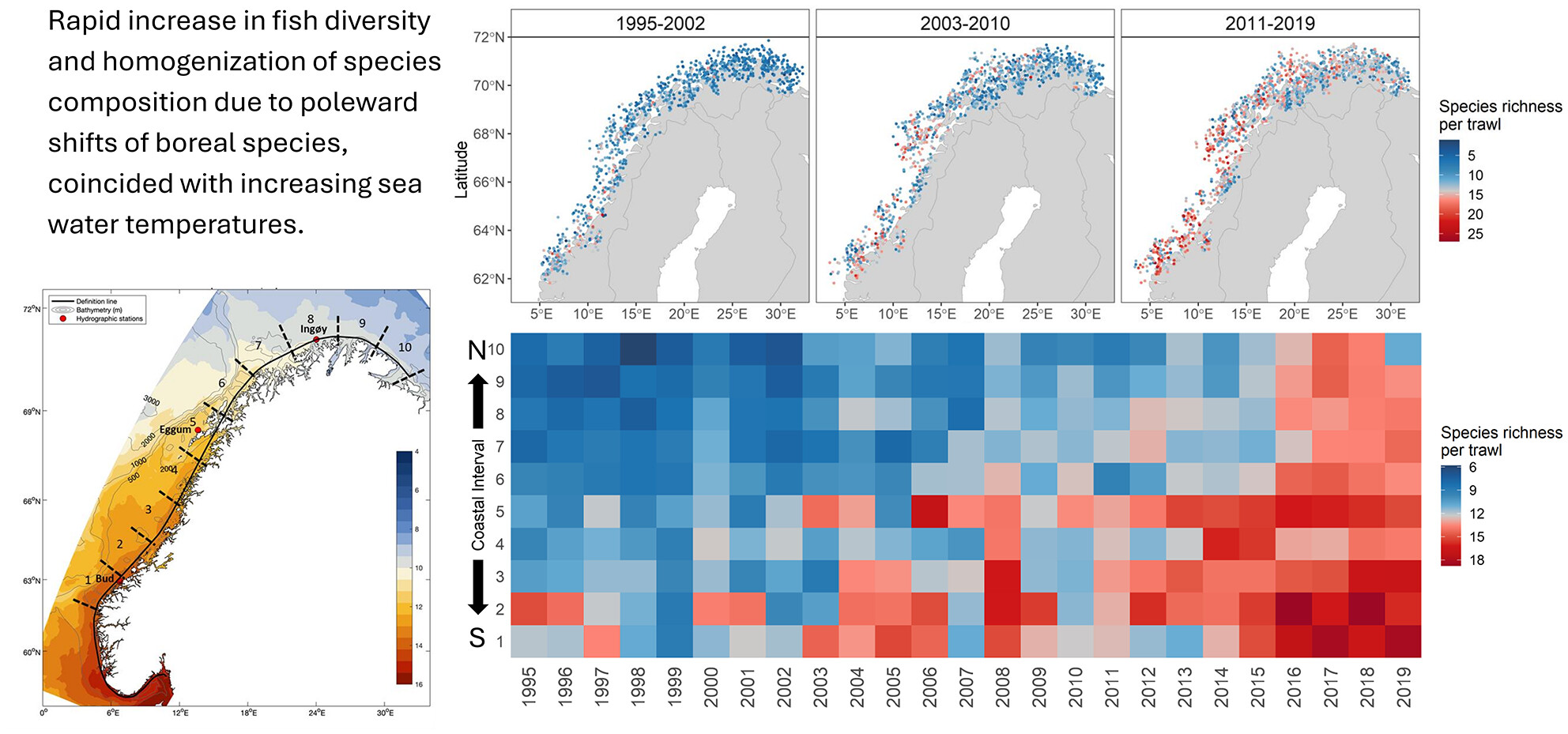
During the last three decades, as water temperatures along the Norwegian coast increased rapidly, many fish species have moved north. The northward expansion in species distributions resulted in higher biodiversity and more similar species composition along the entire coast. The documented changes in diversity and composition are reshaping coastal ecosystems, influencing their functioning, and potentially affecting their provision of goods and services. The rapid, climate-driven changes in fish biodiversity stress the urgent need for a climate adaptation of integrated coastal management.
Unearthing the soil-borne microbiome of land plants
- First Published: 28 May 2024
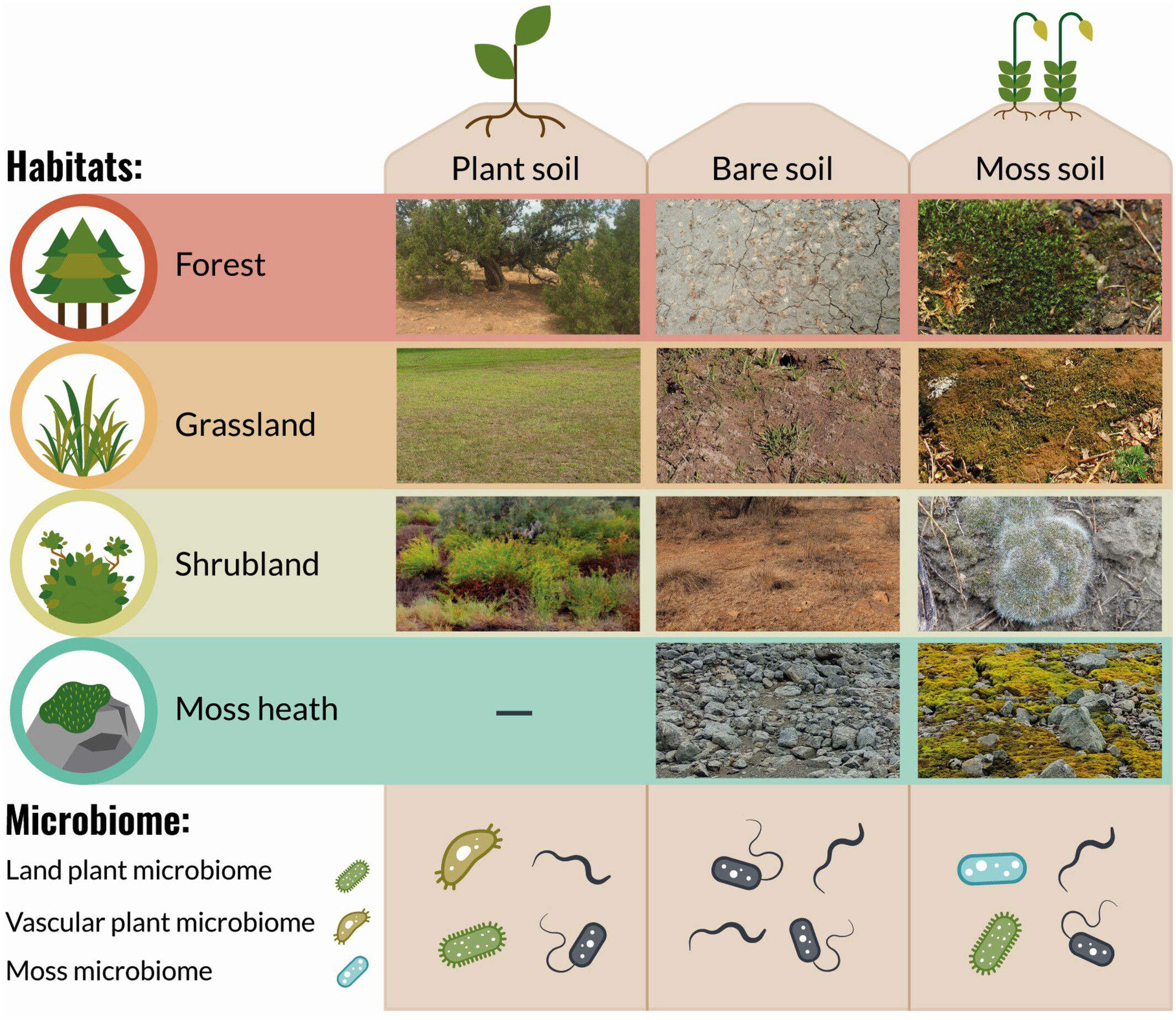
We studied the soil organisms consistently associated with land plants (vascular plants and mosses) across contrasting climates, soils, and vegetation types. We found a small subset of bacteria, fungi, and protists that defined the consistent soil-borne microbiome of land plants and determined their importance for the functioning of plant-associated soils.
Drought shortens subtropical understory growing season by advancing leaf senescence
- First Published: 06 May 2024
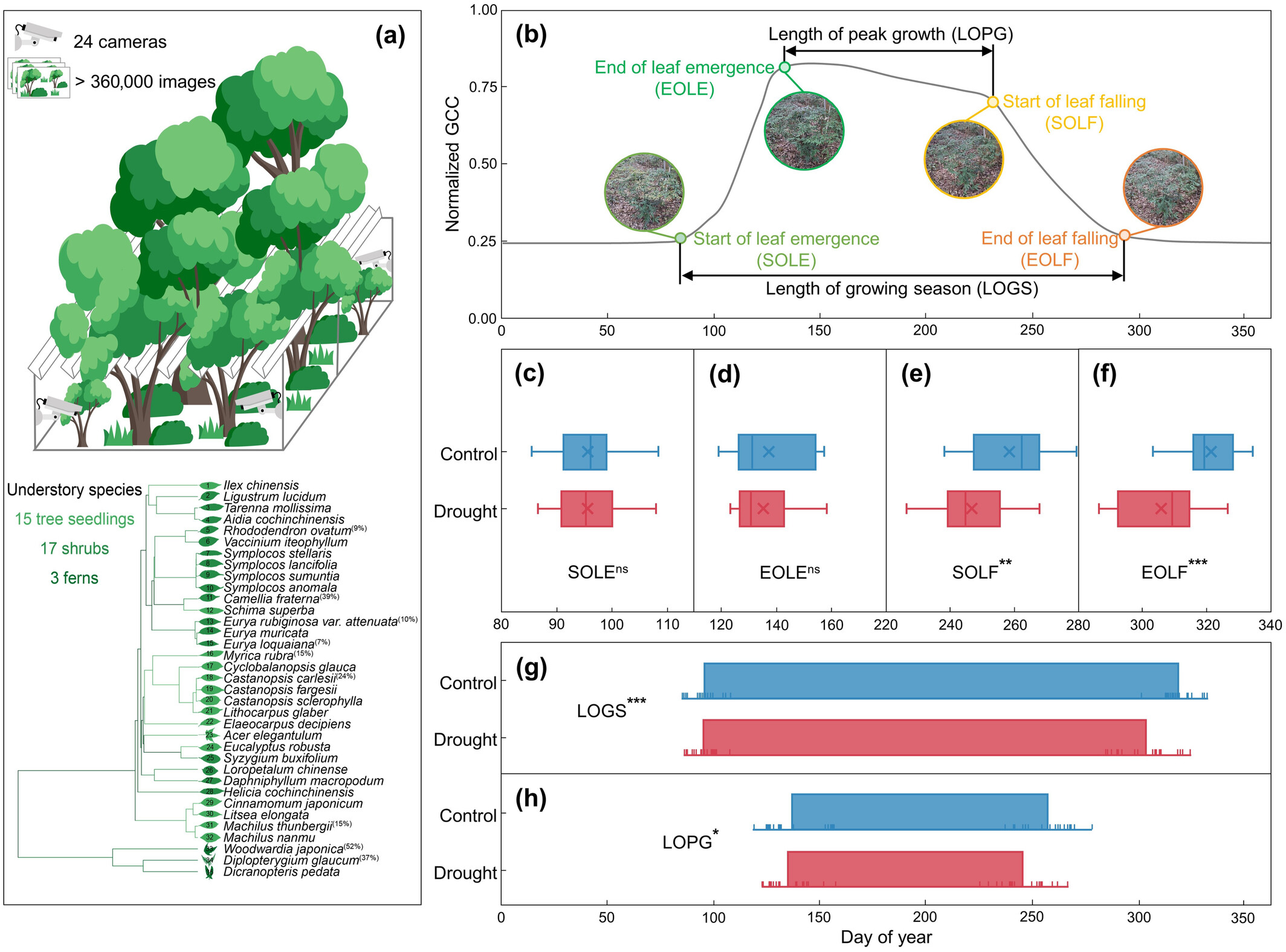
We utilized a digital camera system in conjunction with a throughfall exclusion experiment to examine the impact of drought on subtropical understory leaf phenology. Our findings revealed a notable advancement in understory leaf senescence phenology, with an insignificant shift observed in leaf development phenology under experimental drought conditions, ultimately leading to a shortened growing season. Furthermore, this study found pre-season air temperature and pre-season soil moisture as the primary drivers for understory leaf development and senescence phenology, respectively. This study emphasizes the importance of considering water availability for a comprehensive understanding of leaf phenology constraints.
In situ decrease in rhodolith growth associated with Arctic climate change
- First Published: 13 May 2024
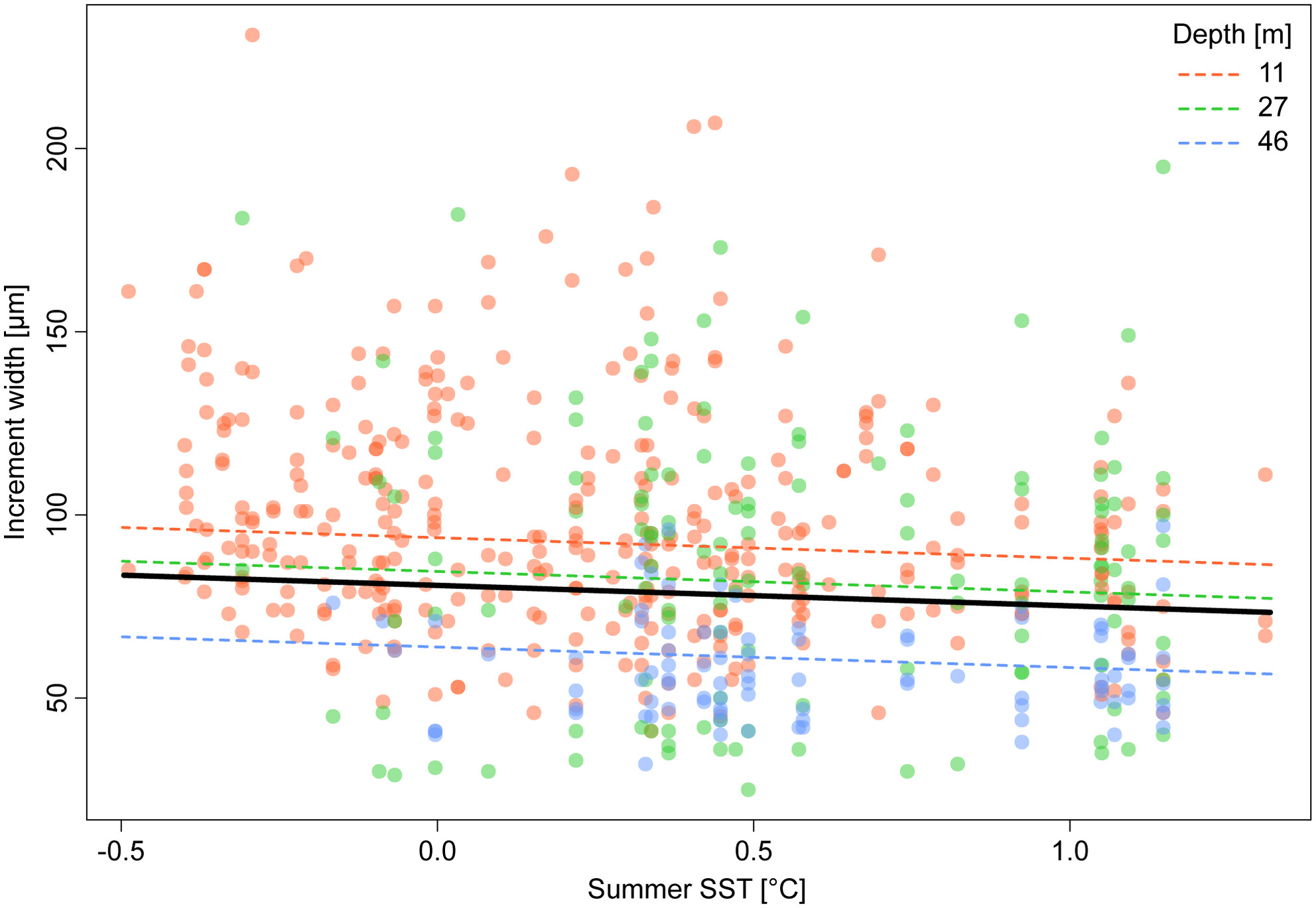
Rhodoliths built by crustose coralline algae are ecosystem engineers of global importance. In the Arctic photic zone, their three-dimensional growth emulates the habitat complexity of coral reefs but with a far slower growth rate. We show that rising ocean temperatures over nearly 100 years were associated with reduced rhodolith growth at different depths in the Arctic. Rhodoliths are important habitat providers worldwide, so decreased growth would lead to yet another facet of anthropogenic habitat loss.
Large-scale remote sensing analysis reveals an increasing coupling of grassland vitality to atmospheric water demand
- First Published: 09 May 2024
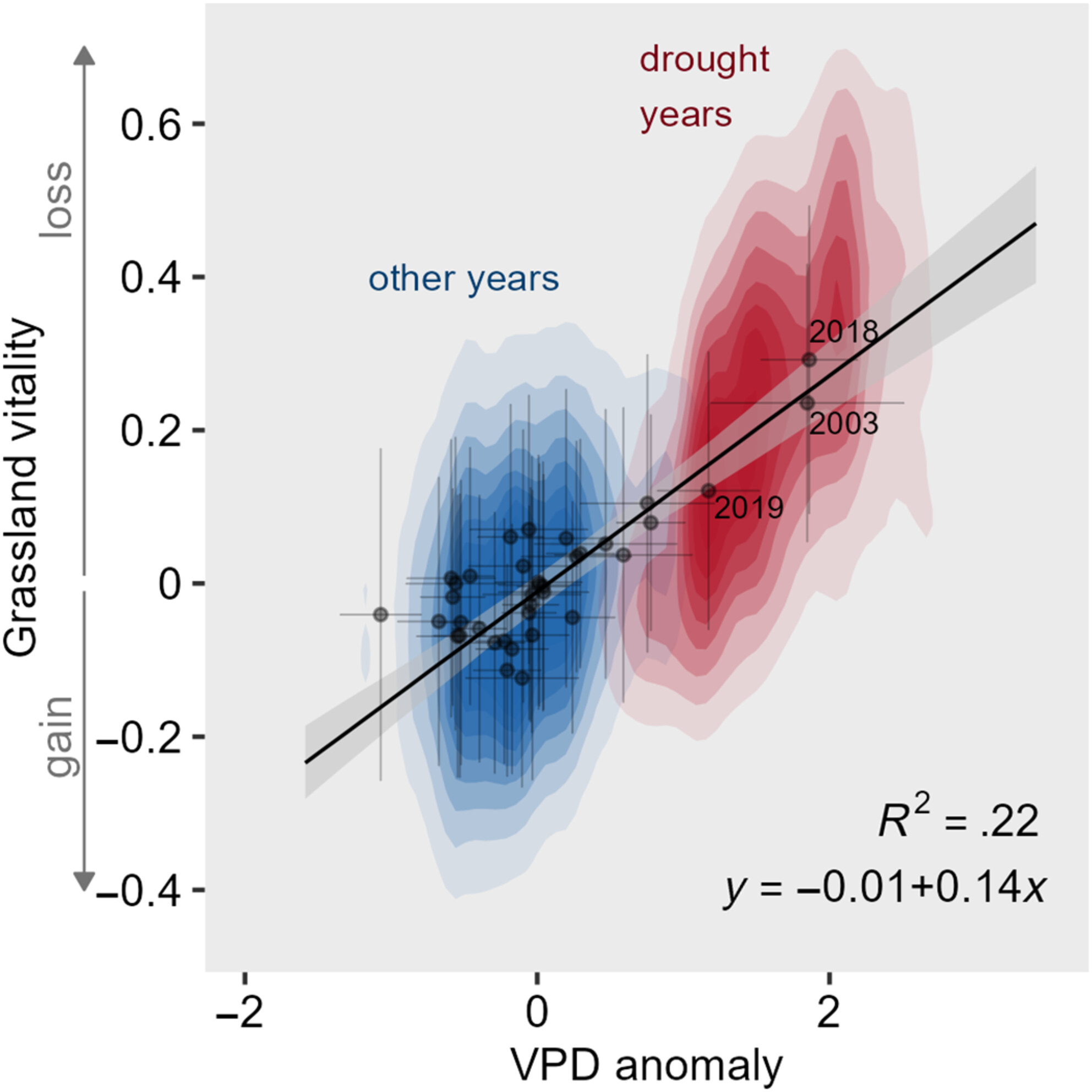
Grasslands are vulnerable to droughts, rendering their future vitality under climate change uncertain. We quantified the drought sensitivity of Central European grasslands pairing a fine-scale remote sensing dataset with climate re-analysis data. Grassland vitality was most sensitive to atmospheric water demand highlighting the importance of recent compounding drought and heatwaves. The spatial variability of drought sensitivity was linked to different grassland habitat types. Our study provides the first large-scale, long-term, and spatially explicit evidence of increasing drought sensitivities of Central European grasslands.
Unveiling the landscape predictors of resilient vegetation in coastal wetlands to inform conservation in the face of climate extremes
- First Published: 15 May 2024
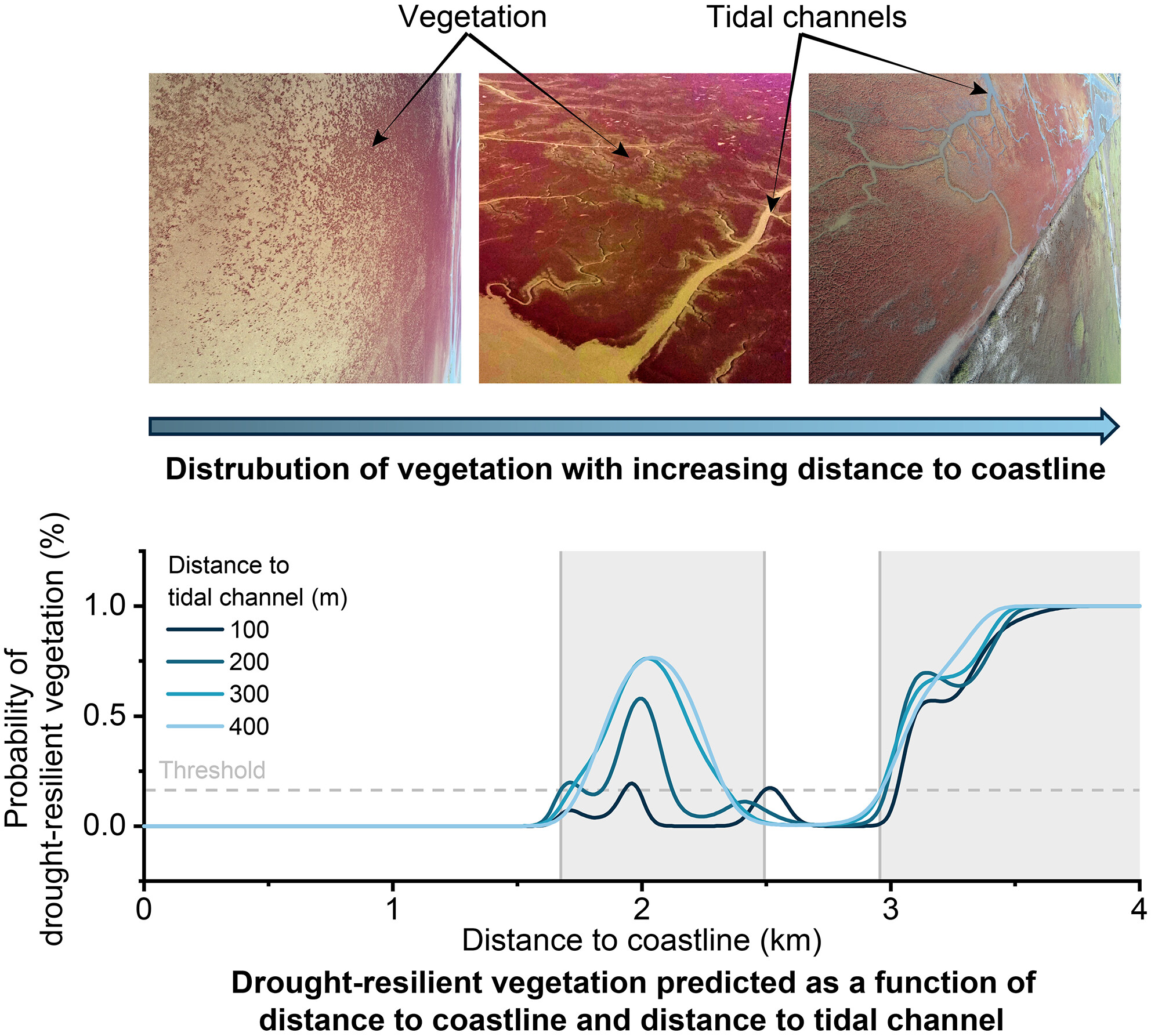
How to predict and protect resilient vegetation in heterogeneous landscapes in the face of climate extremes remains poorly understood. We found that spatial variation in the resilience of vegetation to drought in coastal wetlands could be predicted using simple landscape features such as distance to coastline and tidal channel. Furthermore, areas with drought-resilient vegetation were more likely to be eliminated by wetland conversion, even in protected areas. Our study highlights that the distribution of drought-resilient vegetation can be predicted using landscape features but without incorporating this predictive understanding, conservation efforts may risk failing in the face of climate extremes.
Biological invasions are a population-level rather than a species-level phenomenon
- First Published: 12 May 2024
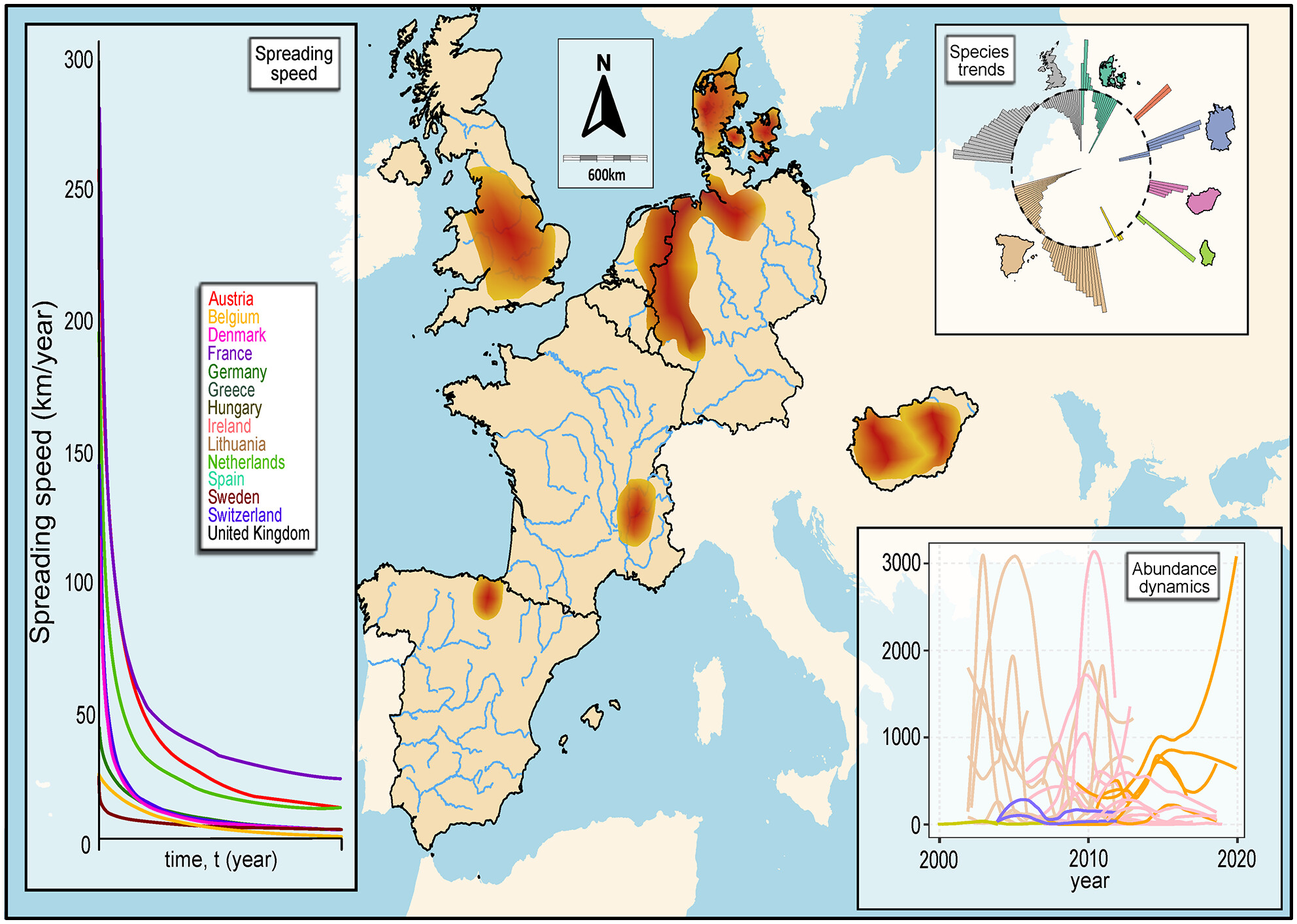
Biological invasions increasingly threaten global ecosystems and socio-economic interests, advancing through mechanisms like natural selection that enhance survival and reproductive traits. Our study focuses on population-level analyses of non-native European freshwater macroinvertebrates to better understand their spread and impact. We found significant variability in invasion dynamics across populations and regions, suggesting that current species-level risk assessments may overlook crucial population-specific factors.
Microbial life-history strategies mediate microbial carbon pump efficacy in response to N management depending on stoichiometry of microbial demand
- First Published: 14 May 2024
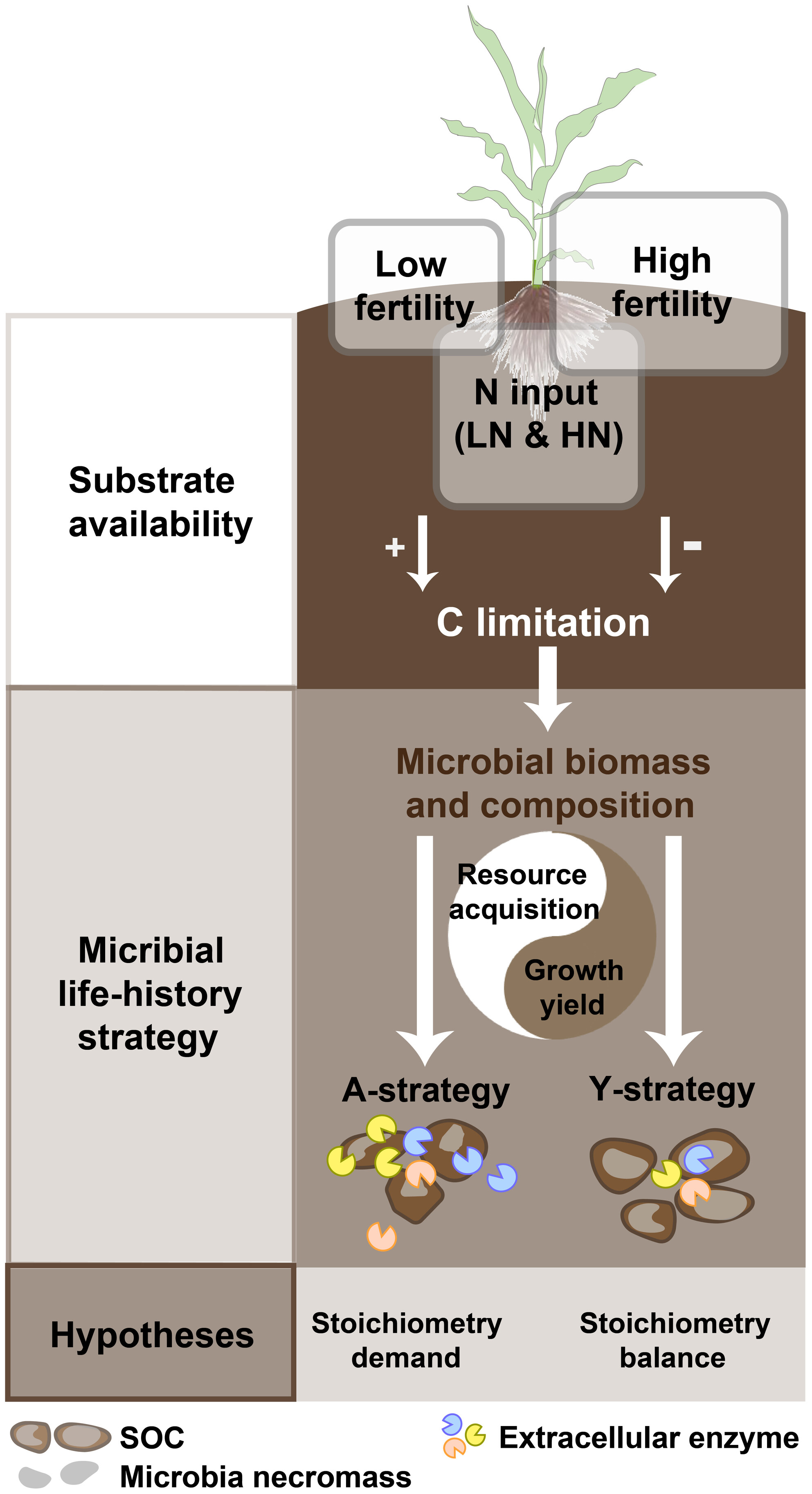
The soil microbial carbon pump is increasingly acknowledged as being directly linked to soil organic carbon (SOC) accumulation and stability. The contribution of microbial necromass to SOC and microbial life strategies displayed two distinct responses in two soils after N amendment. We showed that the effects of continuous N addition on the contribution of microbial necromass to total SOC formation and carbon stability depends strongly on the microbial life strategies. Such information could foster N management optimization to facilitate long-term soil carbon sequestration in agro-ecosystem.
Convergence in simulating global soil organic carbon by structurally different models after data assimilation
- First Published: 13 May 2024

Our study demonstrates the critical role of observational data in reducing uncertainties of global soil organic carbon (SOC) simulations by structurally different models. Two process-based models structurally featuring distinctive carbon pools, decomposition kinetics, and carbon transfer pathways simulate opposite global SOC distributions with their customary parameter values yet converge to similar results after being informed by the same global SOC database using a data assimilation approach. Integrating common observational datasets with process-based models will be critical to inform model development, constrain predictions, and reveal new findings and patterns of key processes in the soil carbon cycle.
Global nitrous oxide emissions from livestock manure during 1890–2020: An IPCC tier 2 inventory
- First Published: 13 May 2024

Global N2O emissions from livestock manure were estimated by using the tier 2 method of the 2019 Refinement to 2006 IPCC guidelines. These emissions increased by ~350% from 451 [368–556] Gg N year−1 in 1890 to 2042 [1677–2514] Gg N year−1 in 2020, primarily driven by cattle, poultry, and pigs in developing regions. A large spread existed among different methodologies in the global estimates, with our results 20%–25% lower than those based on the 2006 IPCC Guidelines.
Enhanced rock weathering increased soil phosphorus availability and altered root phosphorus-acquisition strategies
- First Published: 15 May 2024
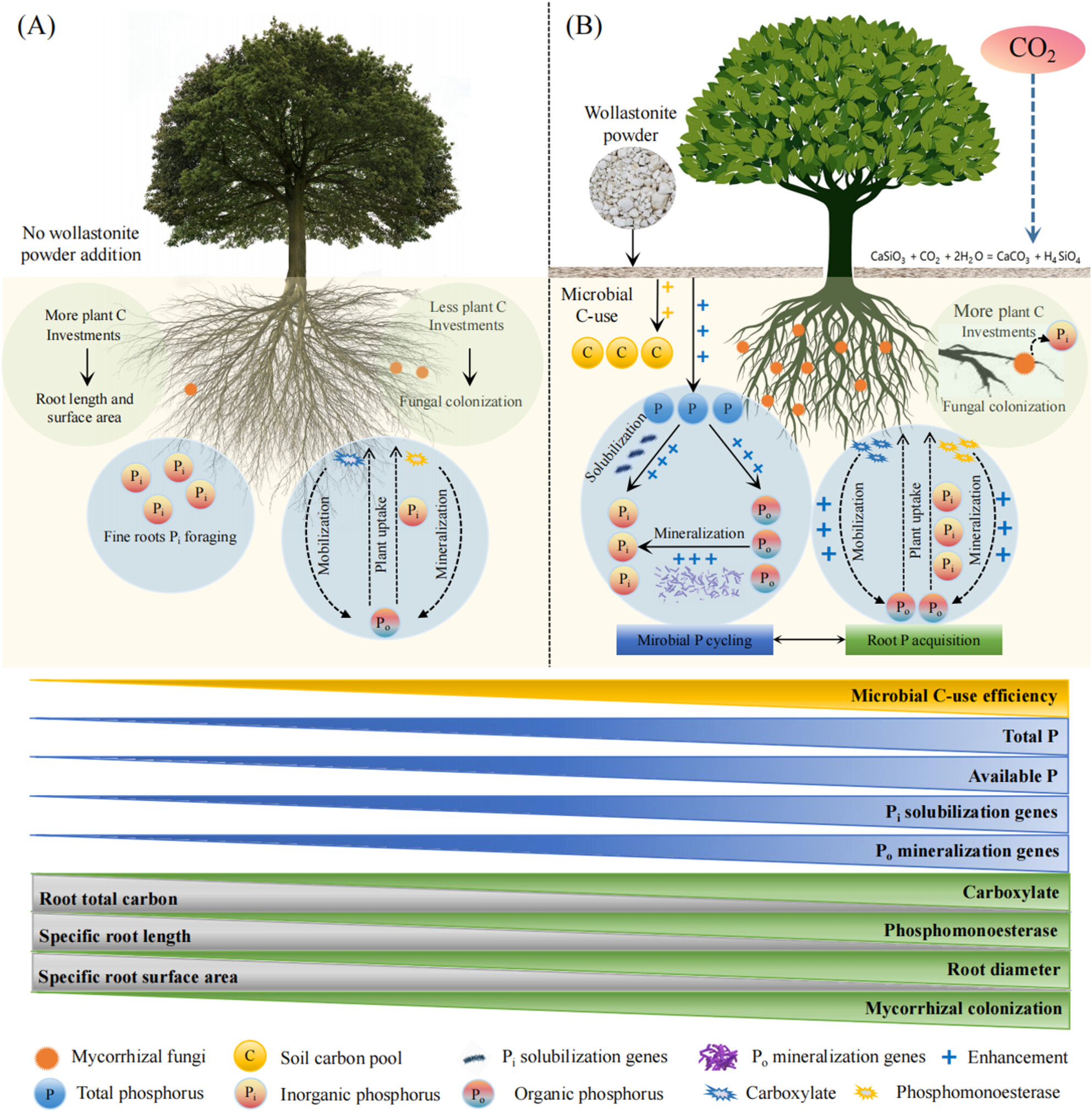
Enhanced rock weathering significantly increased soil microbial carbon-use efficiency and total P concentrations, and indirectly increased soil P availability by enhancing organic P mobilization and mineralization of rhizosheath carboxylates and phosphatase, respectively. The P-acquisition strategy of the rubber fine roots changed from do-it-yourself acquisition by roots to dependence on mycorrhizal collaboration and the release of root exudates.
Global evidence for joint effects of multiple natural and anthropogenic drivers on soil nitrogen cycling
- First Published: 15 May 2024
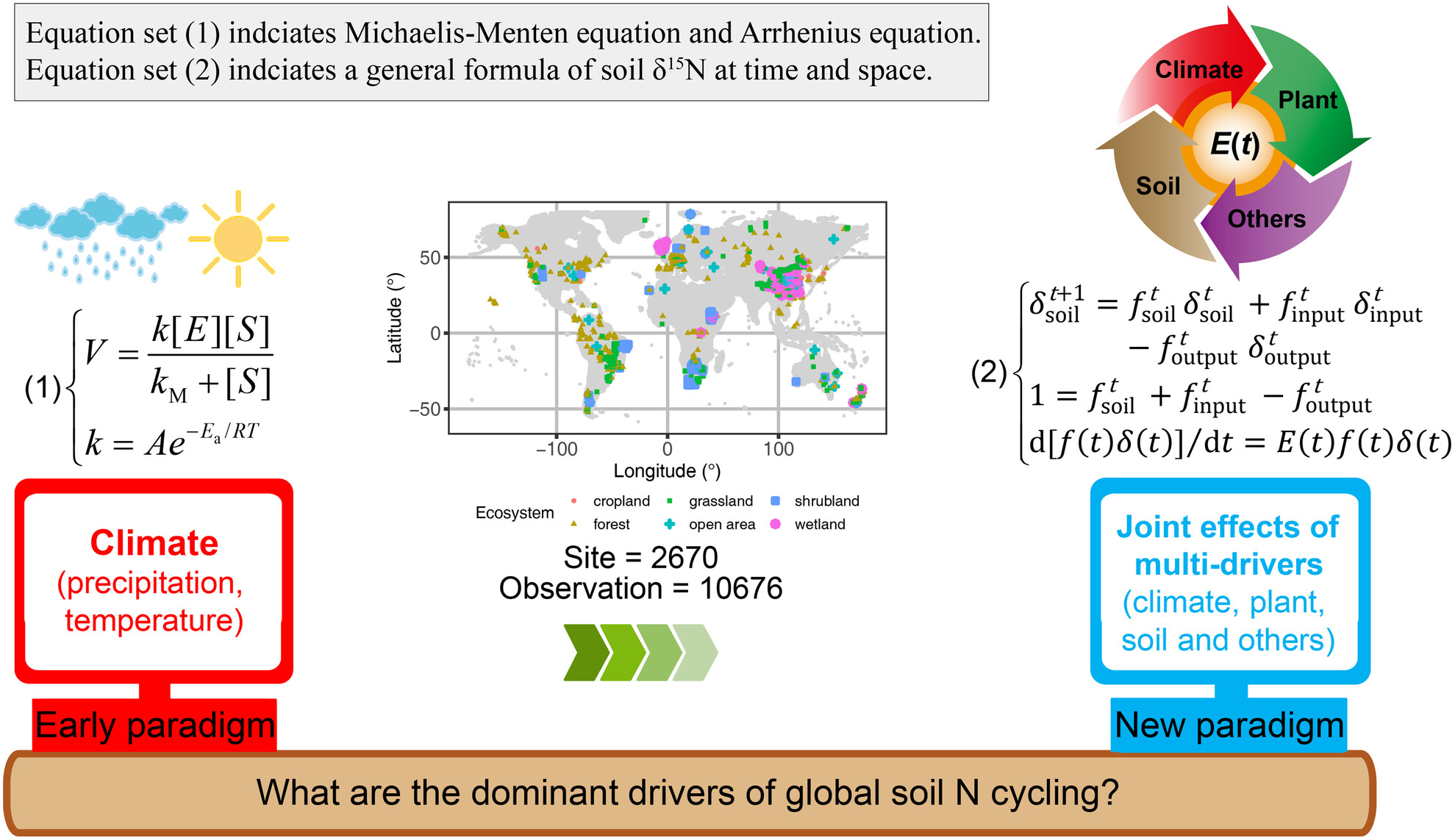
The stable N isotope (δ15N) has emerged as a useful tool for integrating N cycling processes into a single metric. Early studies hold that climatic conditions predominantly control soil δ15N and N cycling, whereas our comprehensive analysis reveals prevalent joint effects of climatic conditions, plant N-use strategies, soil properties, and other natural and anthropogenic forcings on global soil δ15N. Considering the joint effects of multiple drivers is critical for better understanding and assessing the Earth's N balance.
Damage to tropical forests caused by cyclones is driven by wind speed but mediated by topographical exposure and tree characteristics
- First Published: 15 May 2024
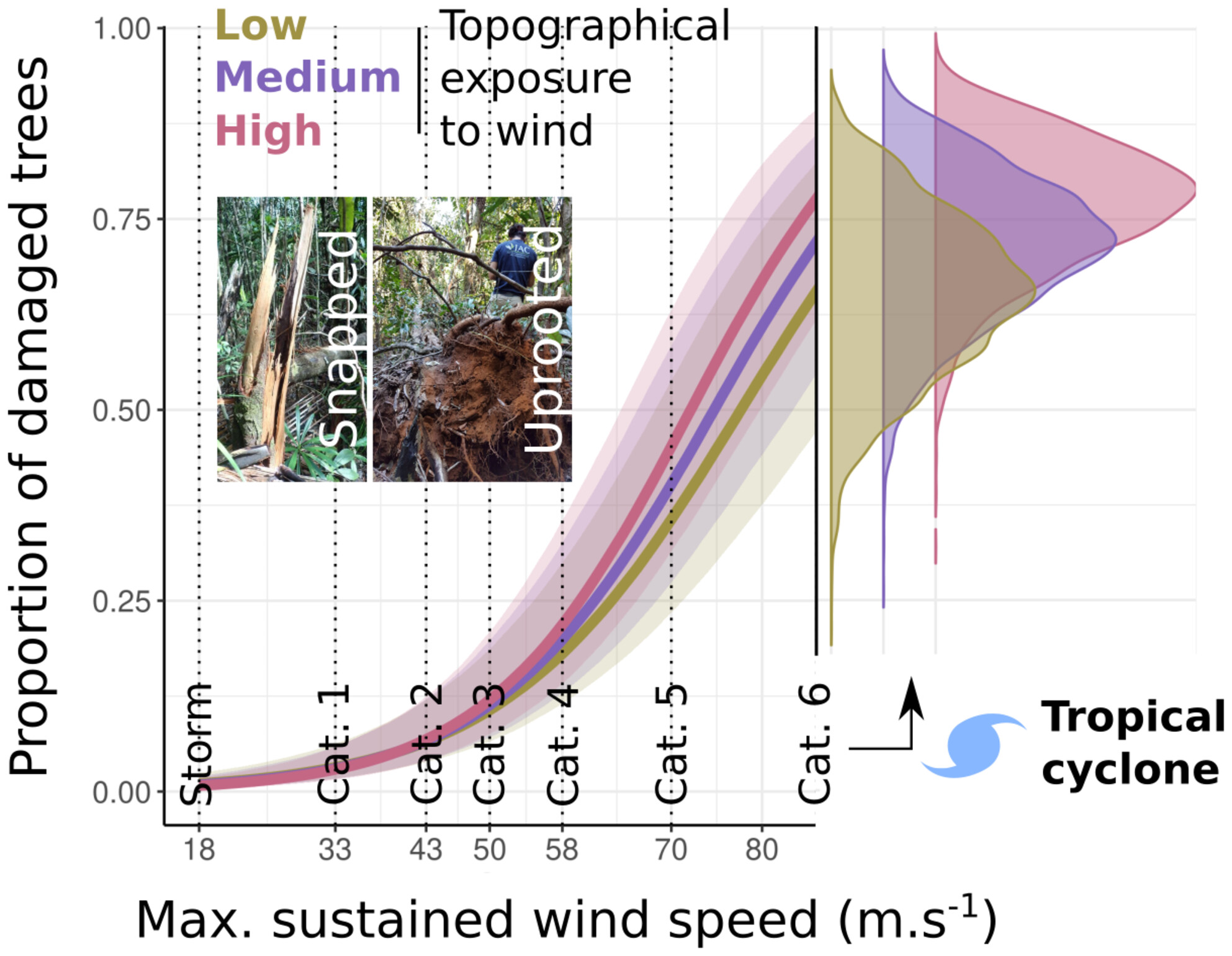
The global proportion of the most intense cyclones is increasing and it remains uncertain how damage to tropical forests will change with increasing wind speed. We compiled empirical data on the damage caused by cyclones from forests representing tropical regions worldwide to better understand the effects of wind speed, topographical exposure to wind, and tree characteristics on the proportion of damaged trees and on the probability of snapping or uprooting. Our work emphasises how local topography, tree size and species wood density together mediate cyclone damage to tropical forests, facilitating better predictions of the impacts of such disturbances.
Controls and relationships of soil organic carbon abundance and persistence vary across pedo-climatic regions
- First Published: 15 May 2024
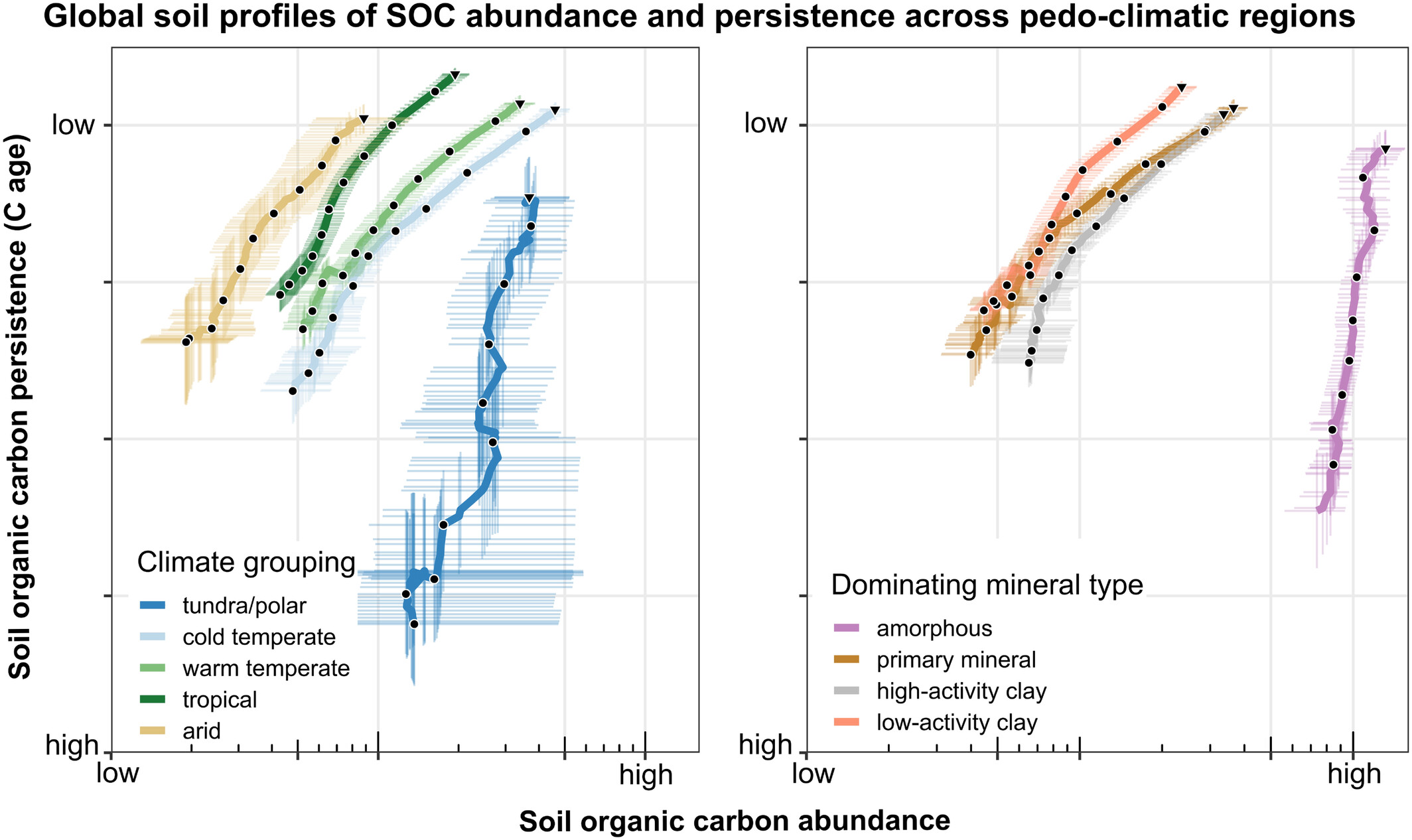
One of the largest uncertainties in the terrestrial carbon cycle is the timing and magnitude of soil organic carbon (SOC) response to climate and vegetation change. We present a global synthesis of SOC and radiocarbon profiles to assess the timescales of SOC storage and the relationship between SOC abundance and persistence across pedo-climatic regions. This process-oriented grouping of SOC abundance and persistence provides a valuable benchmark for global C models, highlighting that pedo-climatic boundary conditions are crucial for predicting the effects of climate change and soil management on future C abundance and persistence.
Distinct responses to warming within picoplankton communities across an environmental gradient
- First Published: 20 May 2024

Picophytoplankton are our planet's most abundant primary producers. To reconcile differences between regional and global predictions for their response to climate change, we here compare the dynamics of two types of picophytoplankton across a coast-to-open ocean gradient. Through an analysis of observations from 22 research cruises, this work explores the conditions under which predictions from global trends can be extended to a nearshore system.
Acclimation capacity to global warming of amphibians and freshwater fishes: Drivers, patterns, and data limitations
- First Published: 21 May 2024

Amphibians and freshwater fishes are particularly vulnerable to the effects of climate change due to the limited thermal buffer of freshwater systems and their constrained habitat dispersal capabilities. Therefore, understanding their physiological sensitivity across life stages is paramount for predicting climate change impacts in freshwater systems. Our systematic review and quantitative synthesis revealed consistent global patterns in upper thermal tolerance (CTmax) and acclimation capacity. Phylogeny, methodology, climatic origin, and life stage emerged as significant determinants. We address methodological concerns and propose research strategies to improve our ability to predict species' climate vulnerability, thereby promoting better-informed conservation efforts.
Why do avian responses to change in Arctic green-up vary?
- First Published: 21 May 2024
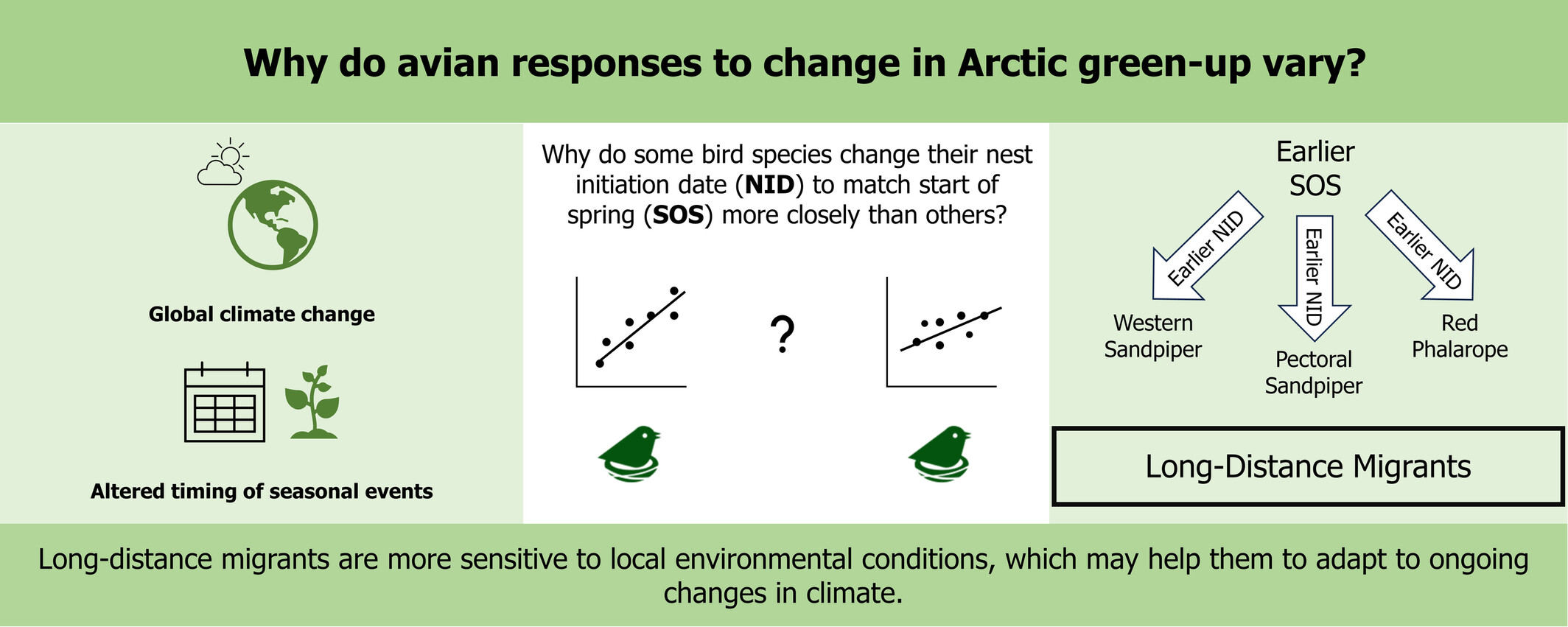
Global climate change has altered the timing of seasonal events for many animals, including northern-nesting birds, but it is not clear why in some species, changes in timing of nesting match variation in climate more closely than in others. We tested to see if differences in the species' ecology might help explain these differences. Adjustments to timing of nesting were most closely matched to climate variation in species migrating over long distances, which may help them adapt to climate change.
Impact of persistently high sea surface temperatures on the rhizobiomes of Zostera marina in a Baltic Sea benthocosms
- First Published: 21 May 2024
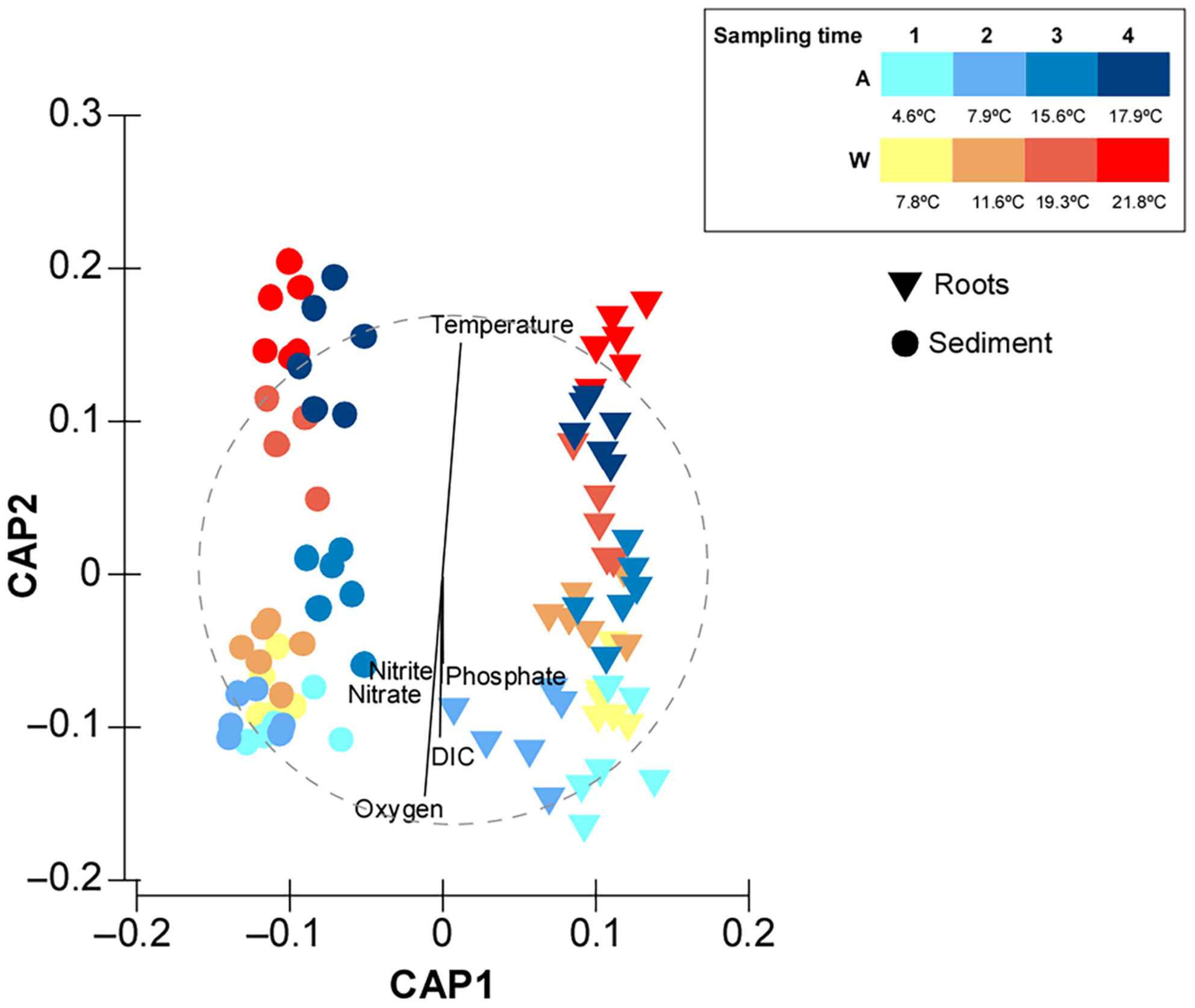
The effects of chronic heating, in Zostera marina microbiomes, emerged earlier in the warming treatment compared with the natural seasonal warming. There were structural and compositional variations of the associated microbiome particularly in bacteria associated with nitrogen, sulfur, and carbon cycles. Those changes were probably due to a major die-off in the plants subject to chronic heating. These major microbiome changes were registered before the major die-off. Seagrass monitoring and conservation programs should integrate results from such research to identify early warning indicators of the seagrass physiological state and prevent the extinction of vulnerable populations under a global change scenario.
Individual and combined impacts of carbon dioxide enrichment, heatwaves, flow velocity variability, and fine sediment deposition on stream invertebrate communities
- First Published: 22 May 2024
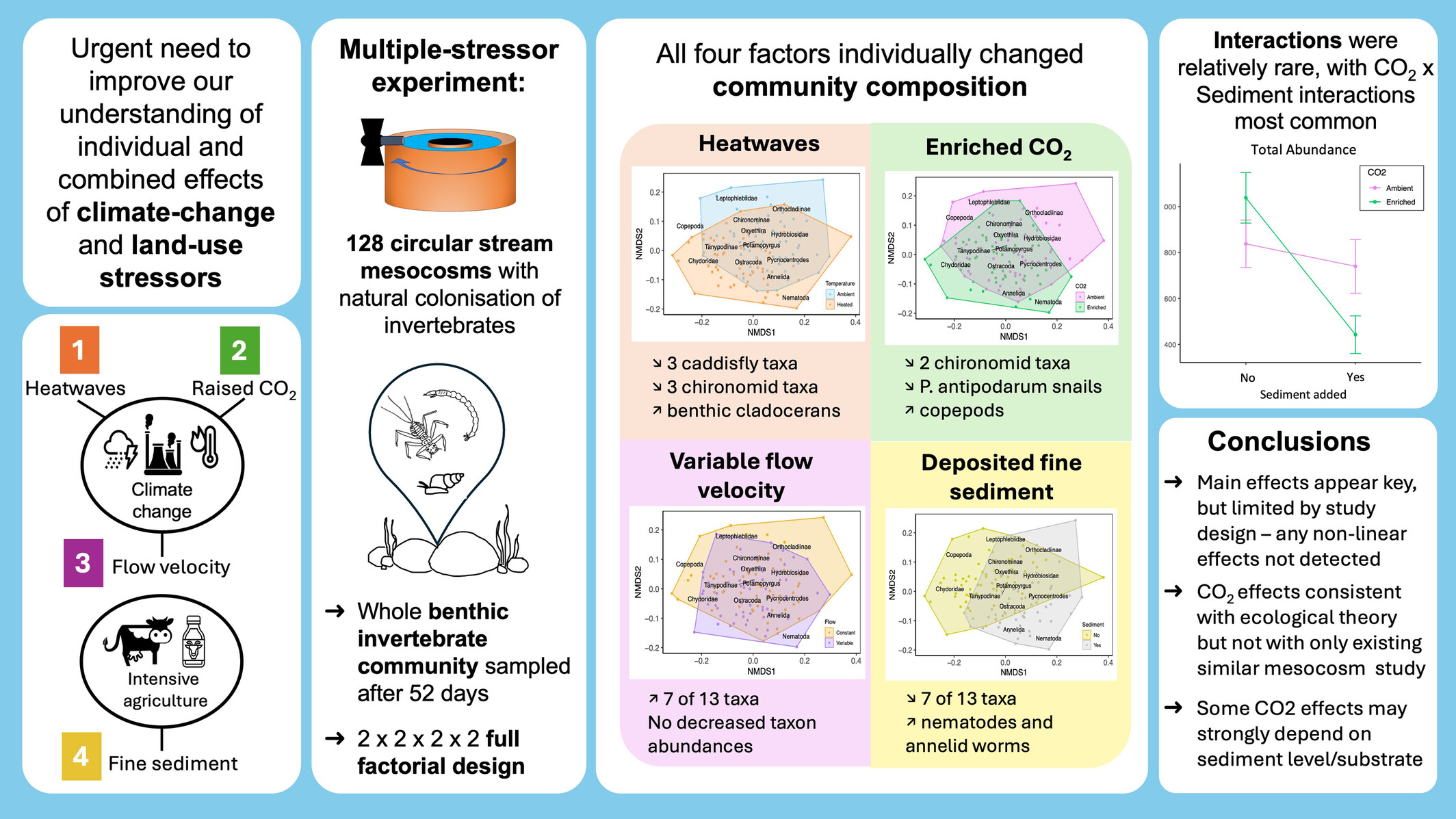
Climate change and human land use are two large threats to invertebrate communities in freshwaters, which are crucial to healthy ecosystems. We ran an experiment in stream mesocosms (small model systems), looking at the individual and interactive effects of heatwaves, carbon dioxide, variability in flow velocity, and fine sediment (related to agriculture). We found changes in community composition from all four, and several interactions involving CO2 and sediment. Our results, although limited, provide insight into potential effects of some poorly understood climate variables and suggest certain CO2 effects in streams may be strongly influenced by sediment.
OPINION
Comparing environmental impacts of deep-seabed and land-based mining: A defensible framework
- First Published: 23 May 2024
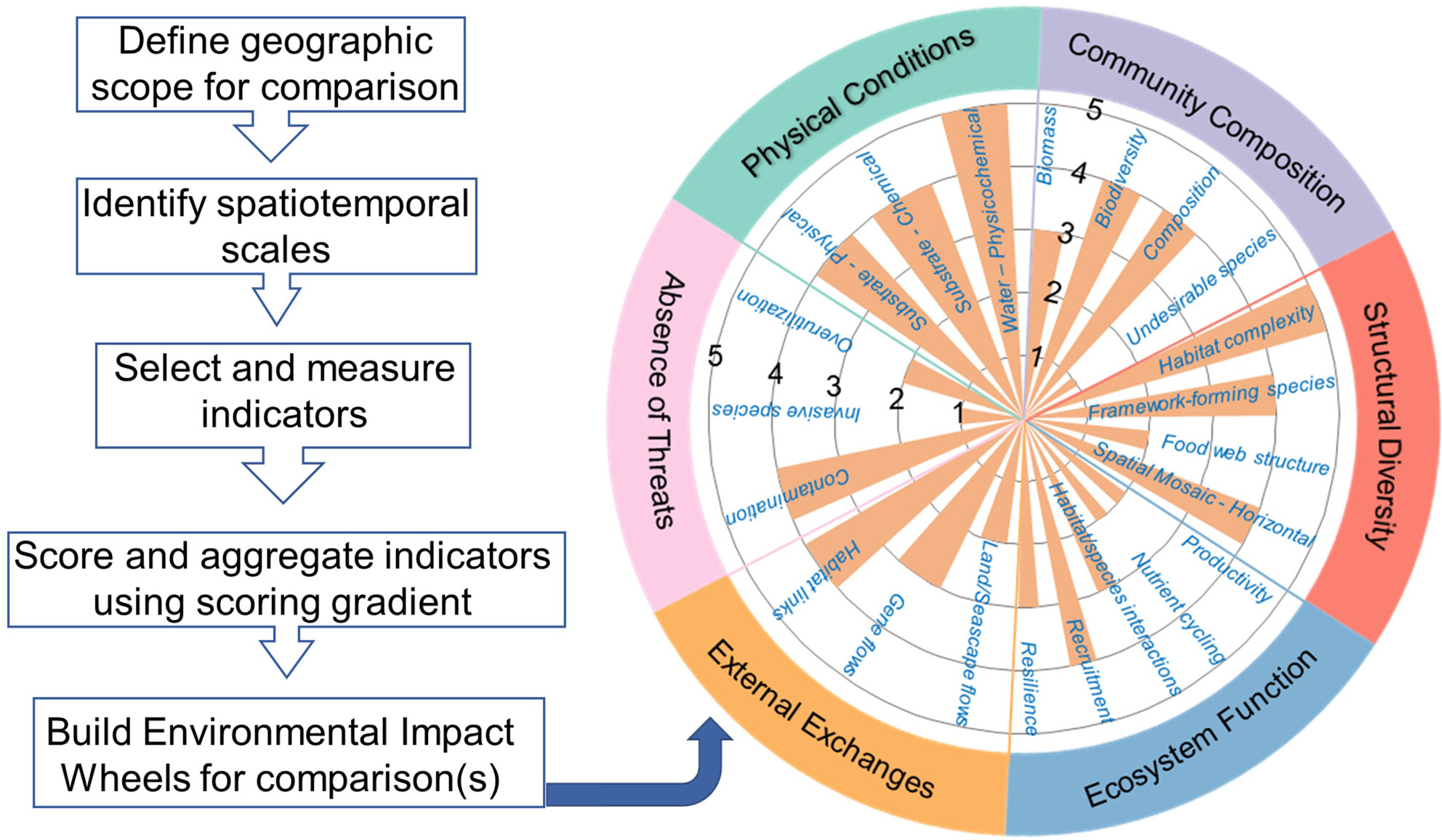
The crises of climate change and biodiversity loss are interlinked and must be addressed jointly. A proposed solution for reducing reliance on fossil fuels, and thus mitigating climate change, is the transition from conventional combustion-engine to electric vehicles which currently requires additional mineral resources. Most options to meet this demand are associated with some biodiversity loss. One proposal is to mine the deep seabed, a vast, relatively pristine and mostly unexplored region of our planet. We present a framework that facilitates a holistic comparison of relative ecosystem impacts by mining, using empirical data from relevant environmental metrics.
RESEARCH ARTICLES
Rising plant demand strengthens nitrogen limitation in tidal marsh
- First Published: 28 May 2024
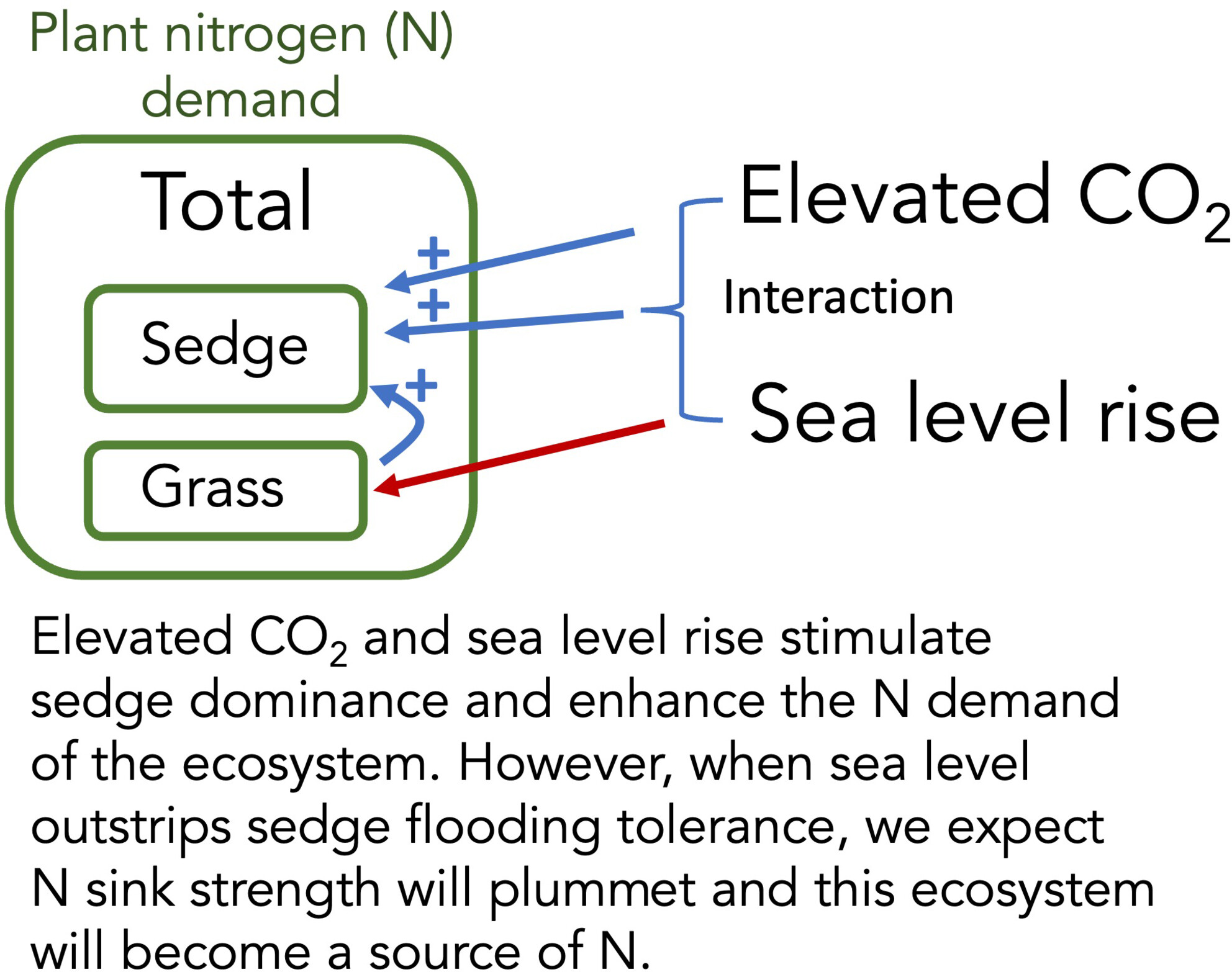
Nitrogen is the primary limiting nutrient for plant growth. While the amount reactive nitrogen in the biosphere has increased since preindustrial times, the amount of N required by plant growth has also increased, so the degree to which future plant growth will be limited by nitrogen scarcity remains unknown. Based on long-term resource manipulation, we conclude that nitrogen is becoming generally more limiting in a tidal marsh as elevated CO2 and sea levels rise.
Beyond the visible: Accounting for ultraviolet and far-red radiation in vegetation productivity and surface energy budgets
- First Published: 27 May 2024
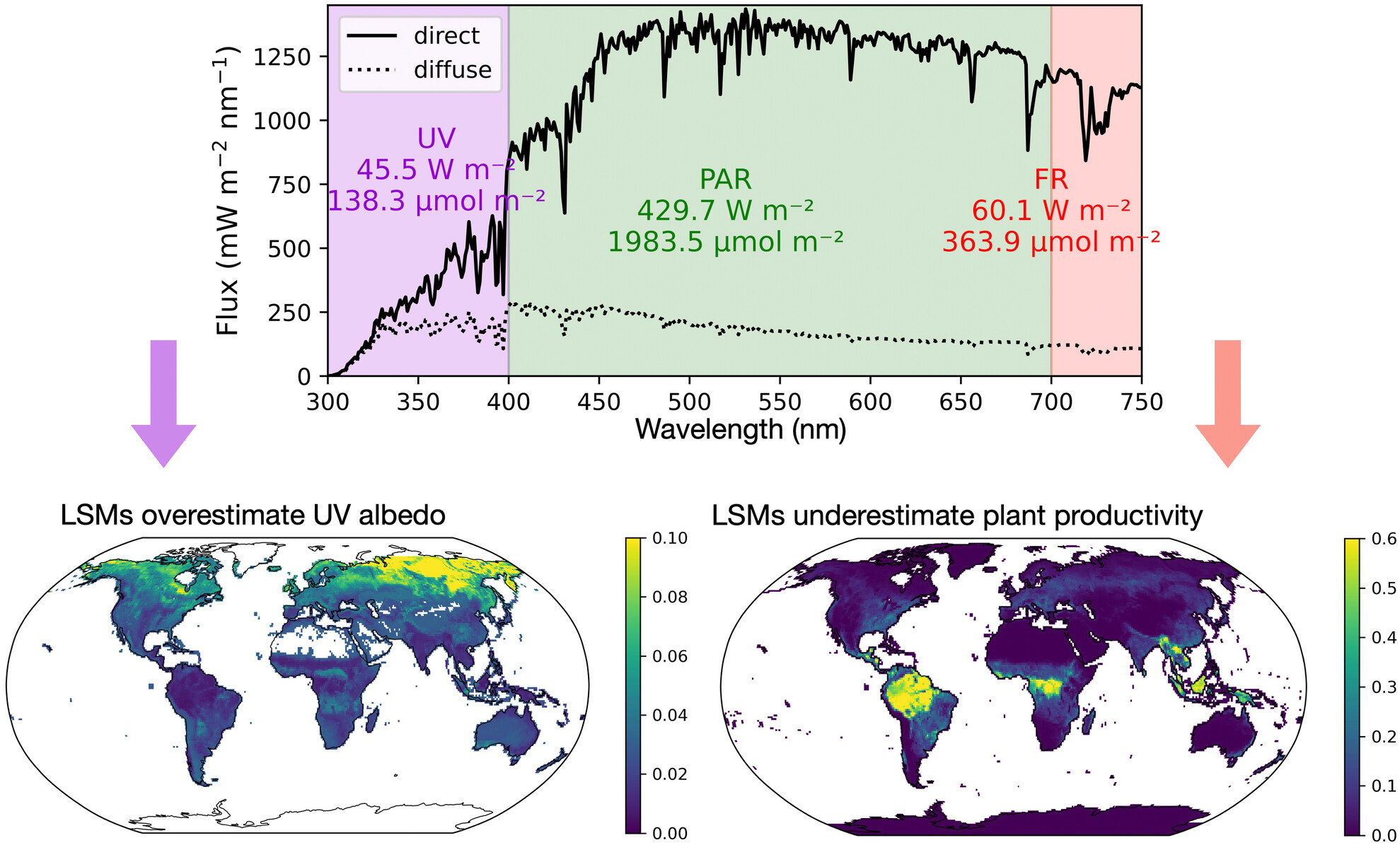
Earth's surface receives an average of 105 W ultraviolet and far-red energy per meter square, and plants can use them for photosynthesis. However, most climate models do not explicitly consider this, thus subjecting to biased plant productivity and surface energy budget predictions. Moving to hyperspectral radiative transfer models could help resolve the problem.
Biological mitigation of soil nitrous oxide emissions by plant metabolites
- First Published: 27 May 2024
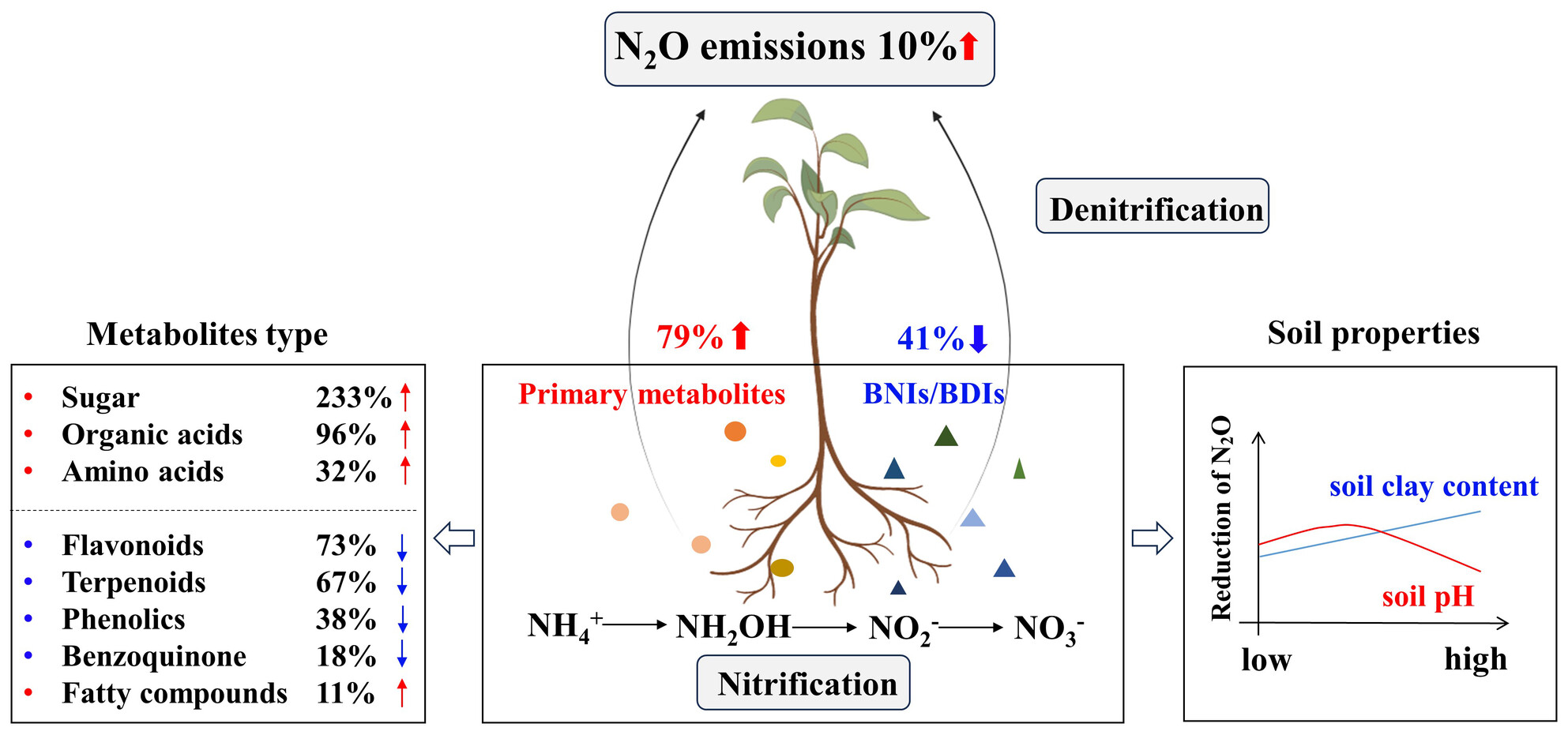
Plant metabolites have been suggested as a nature-based solution to deal with the global climate crisis. Secondary metabolites belonging to the phenolic, terpenoid, and flavonoid classes reduced N2O emissions. Their biomitigation was closely associated with soil texture and pH, with optimum reduction achieved on soils with high clay content and near-neutral pH.
Vrba was right: Historical climate fragmentation, and not current climate, explains mammal biogeography
- First Published: 28 May 2024
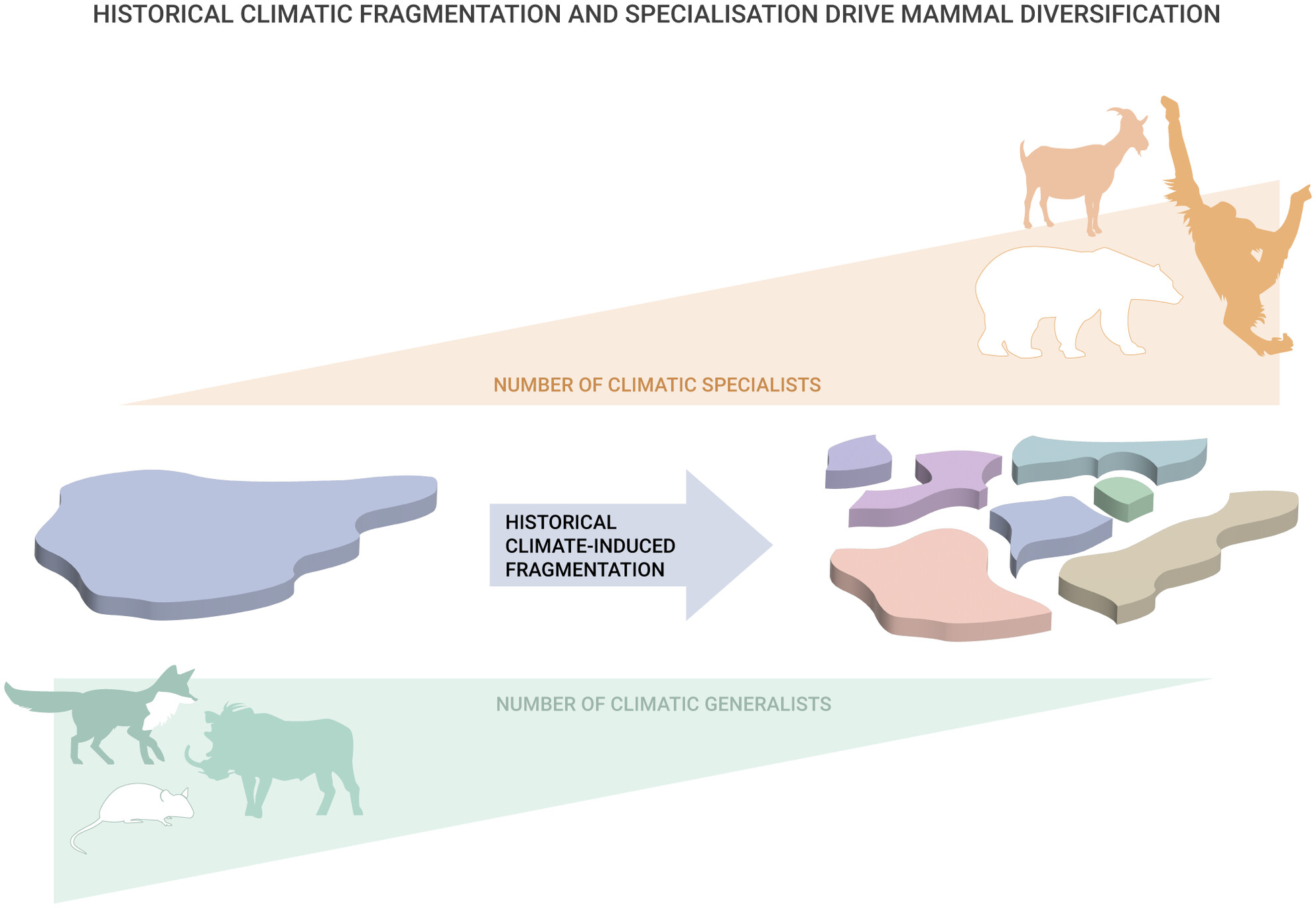
This study explores how past climate changes have influenced species distribution. We found that regions with more historical climate variation have more specialist species, while generalist species decrease. This effect is stronger than the link between current climate and species richness. These findings support the idea that past climate changes play a big role in shaping where species live.
OPINION
Shifting the paradigm: The role of introduced plants in the resiliency of terrestrial ecosystems to climate change
- First Published: 28 May 2024
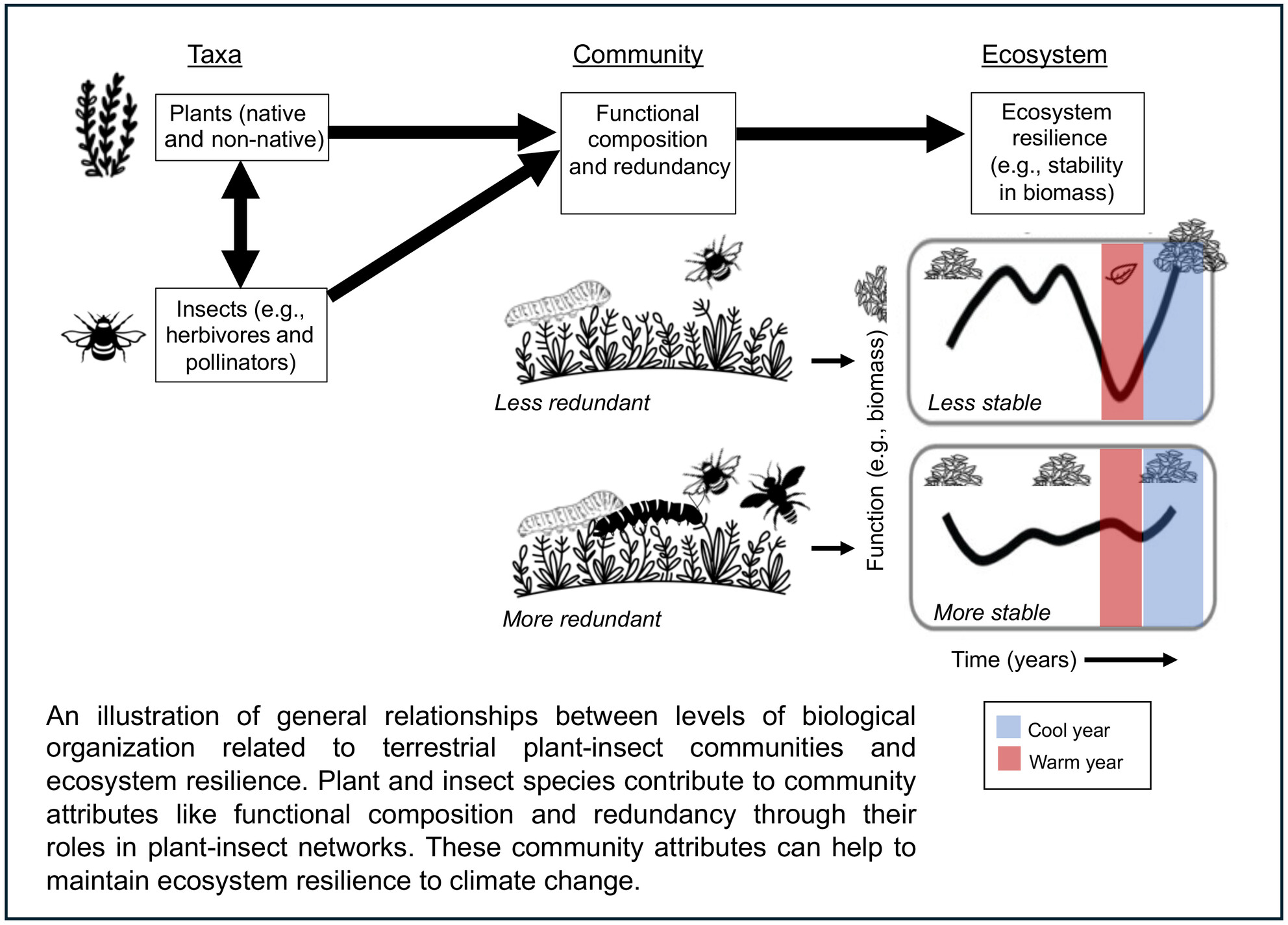
In this perspective, I argue that we need to rethink the way we consider introduced plants in the resiliency of ecosystems to climate change. Given the ability of introduced species to tolerate and adapt to a broad range of environmental conditions, I suggest that introduced plants may fulfill a similar functional role as native plants that have been lost and/or provide a critical role that cannot (yet) be performed by ‘local’ native plant species. I propose that we need a clearer picture of the complex roles that introduced species play in our ecosystems and how they respond to climate change.
RESEARCH ARTICLES
Climate warming accelerates carbon release from foliar litter—A global synthesis
- First Published: 28 May 2024
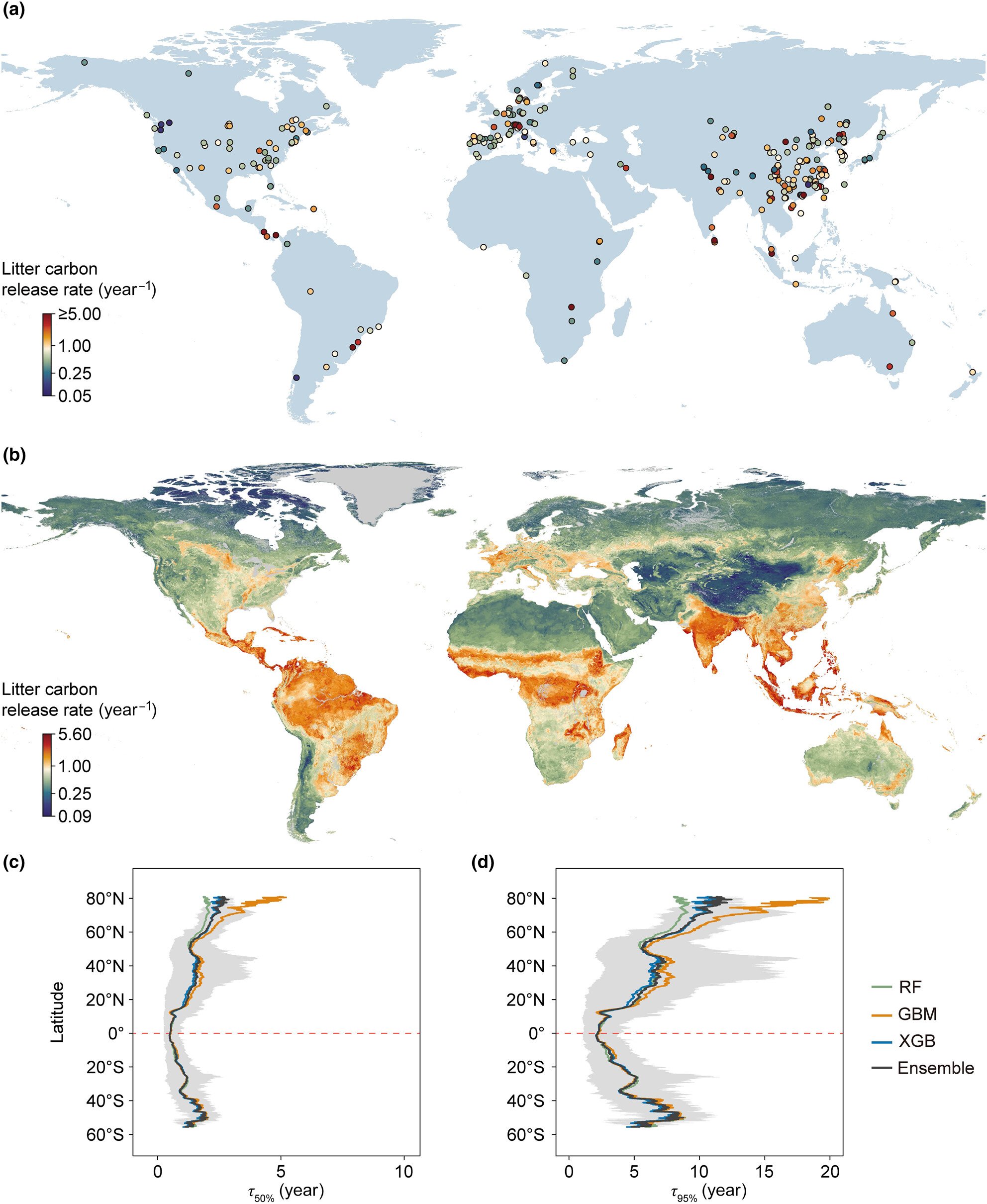
This study presents the first attempt to quantitative information on litter carbon release rate at the global scale. Our analysis supports the concern that rising temperatures speed up the carbon loss from litter to soil or atmosphere, especially in cold biomes with slower carbon turnover times, potentially leading to a positive litter carbon–climate feedback that could, in turn, exacer.





